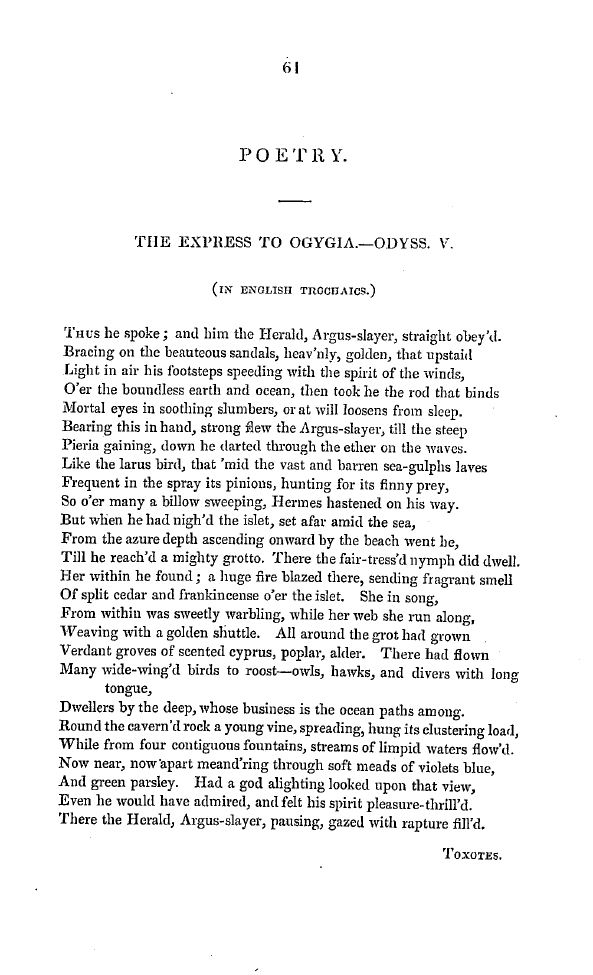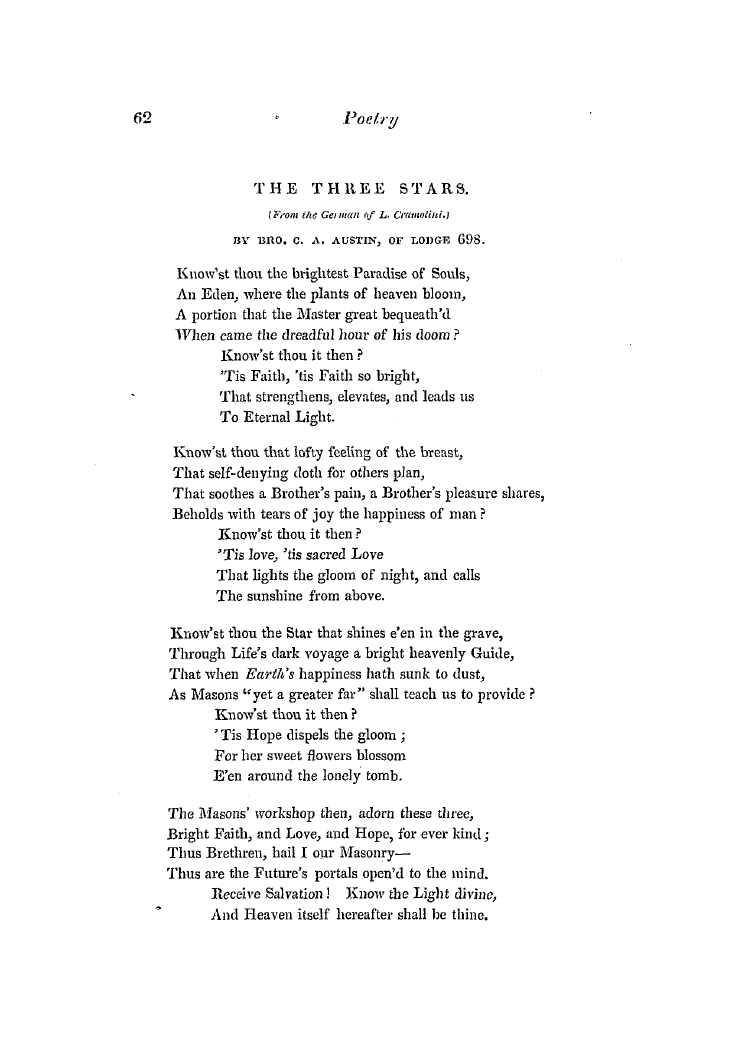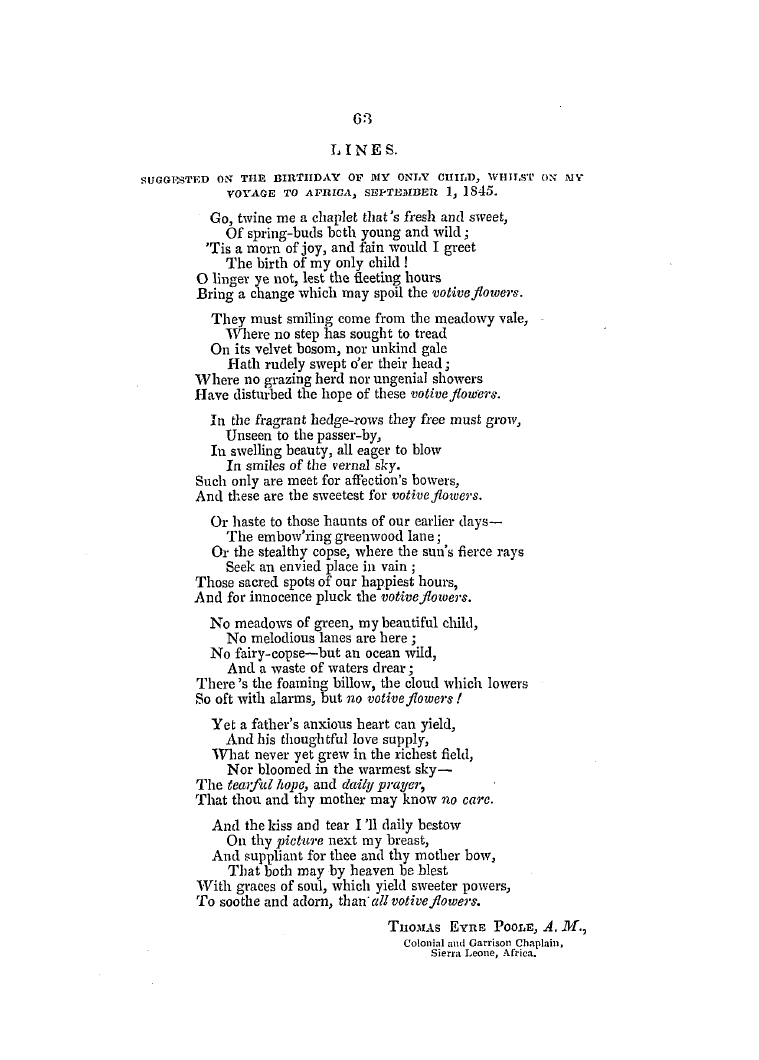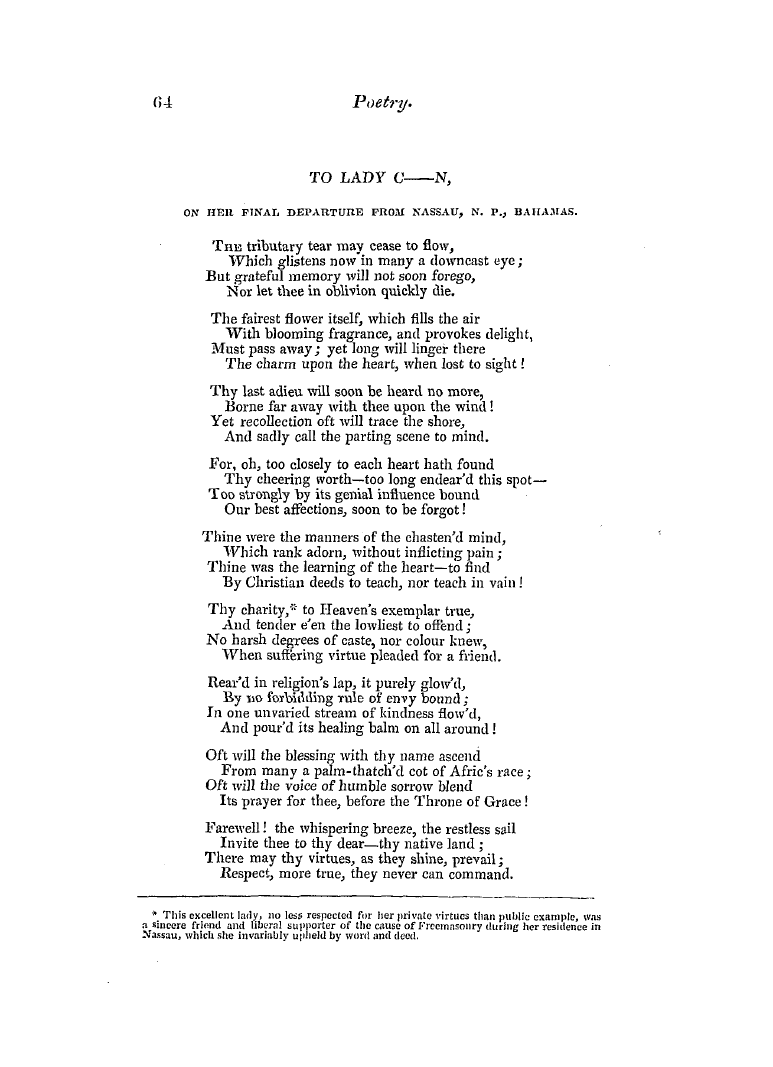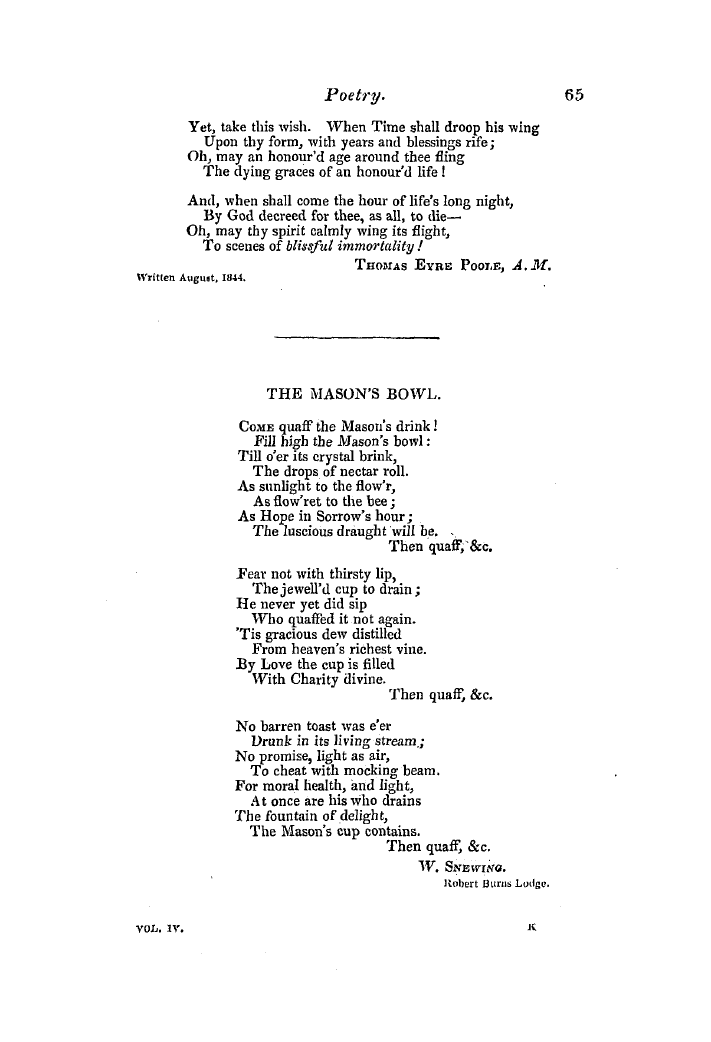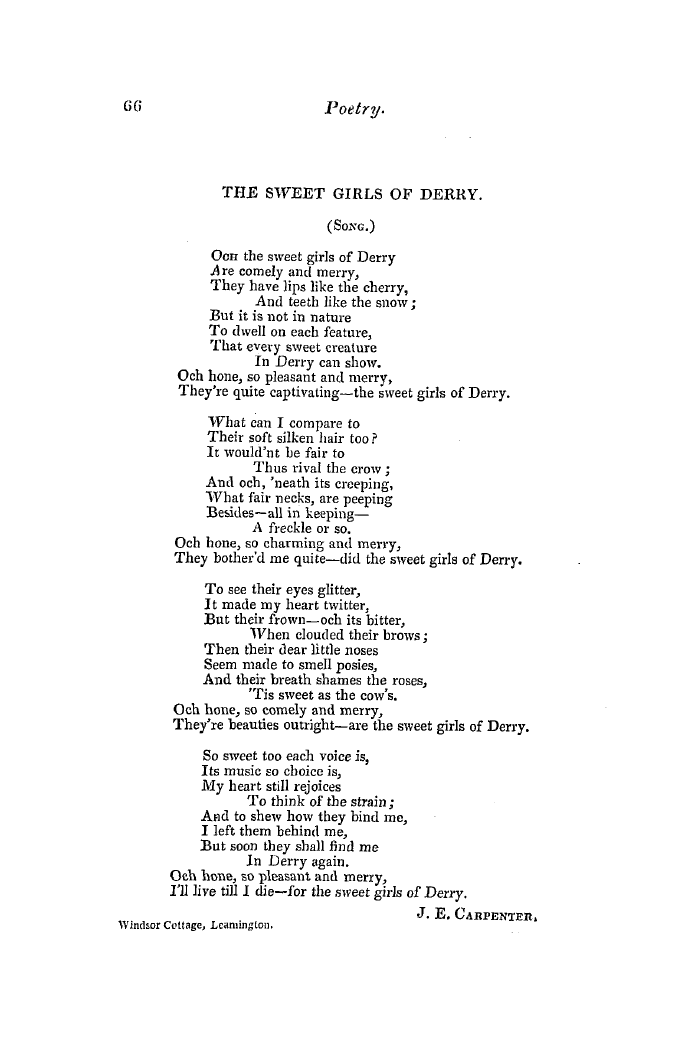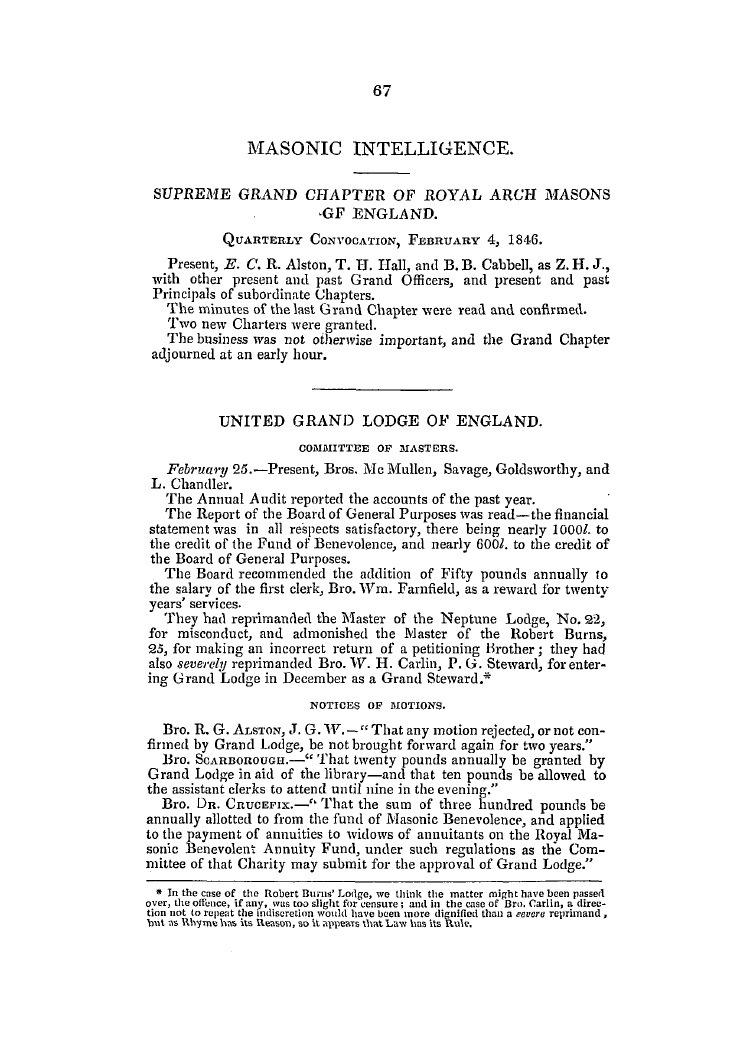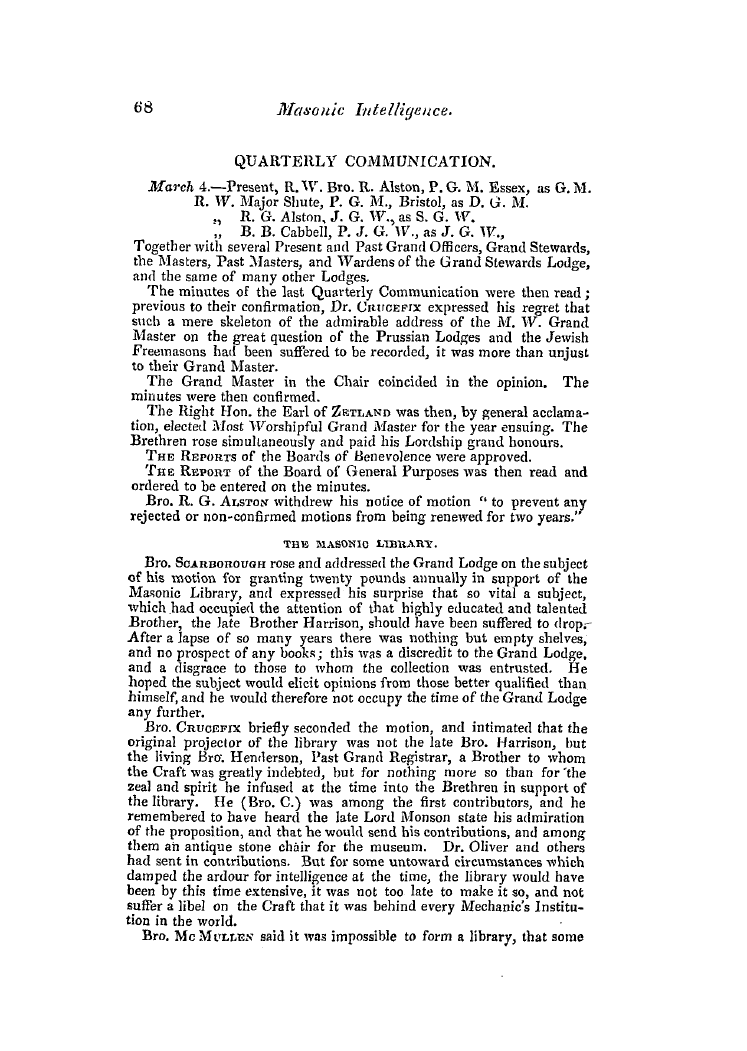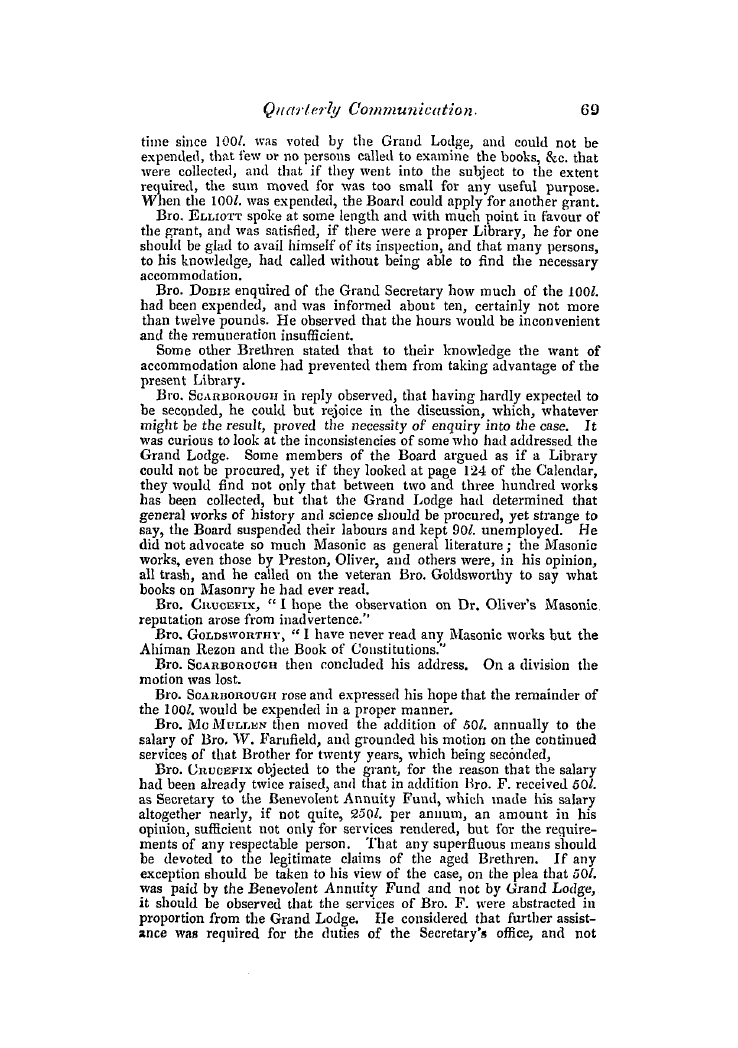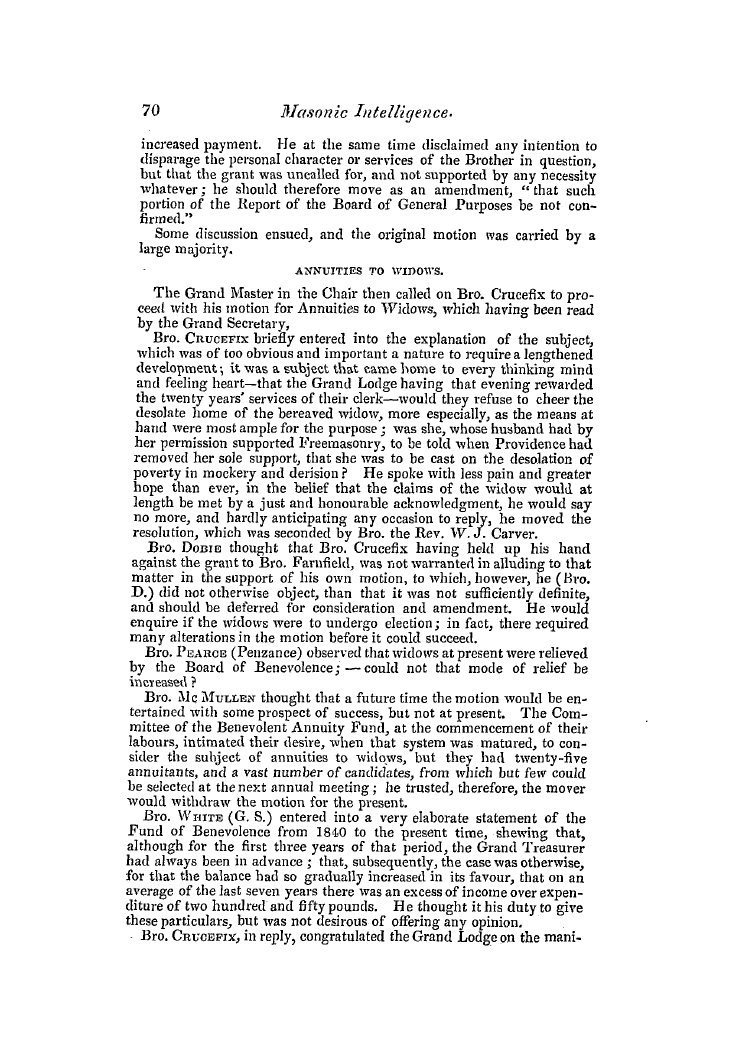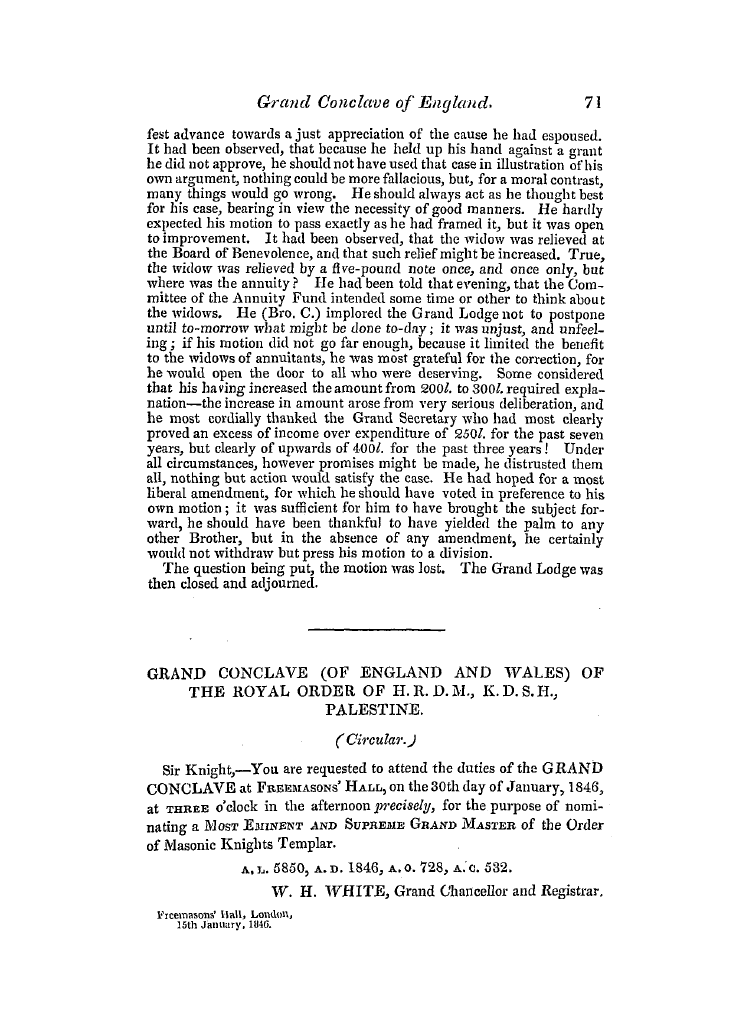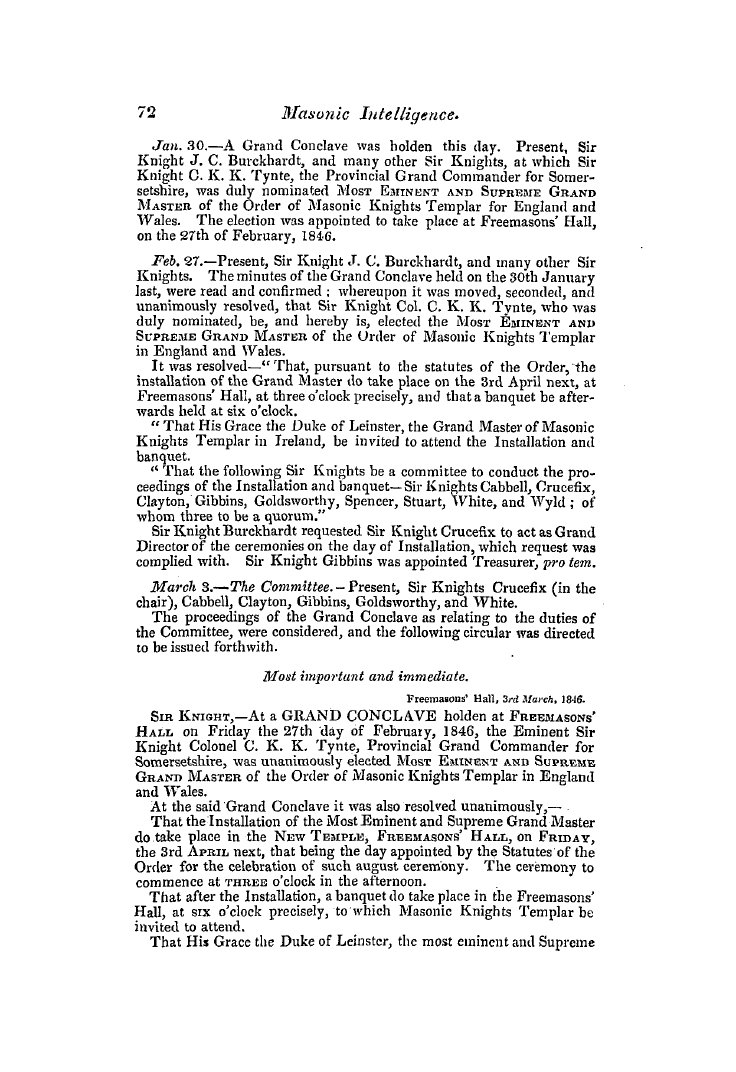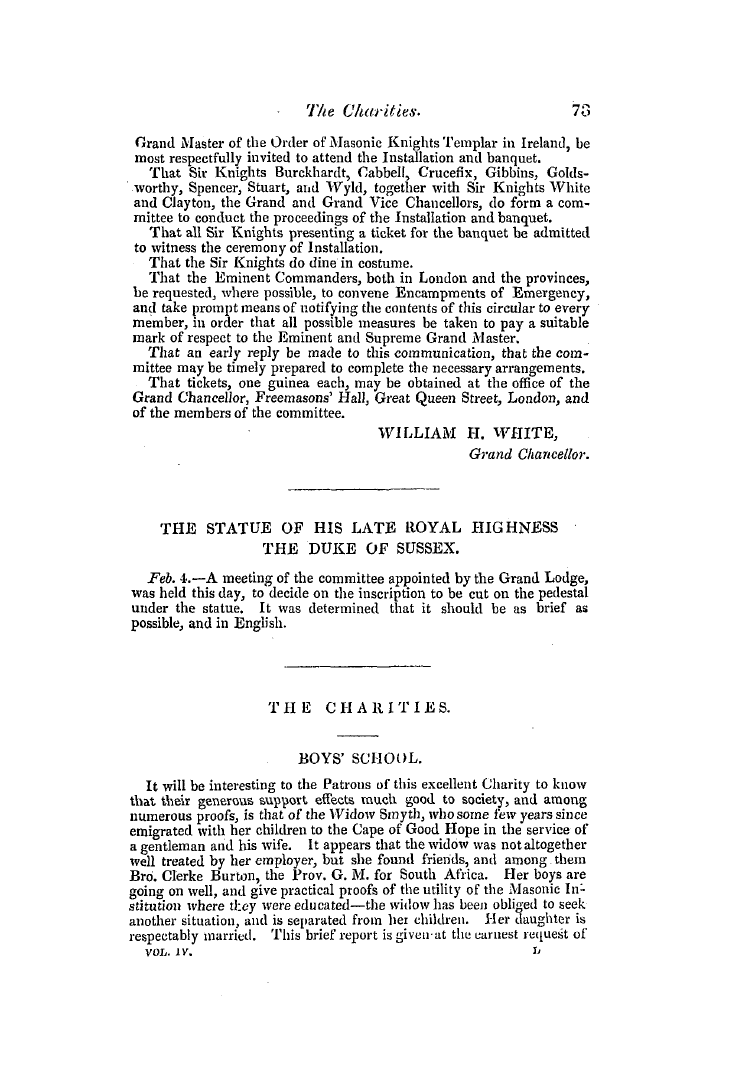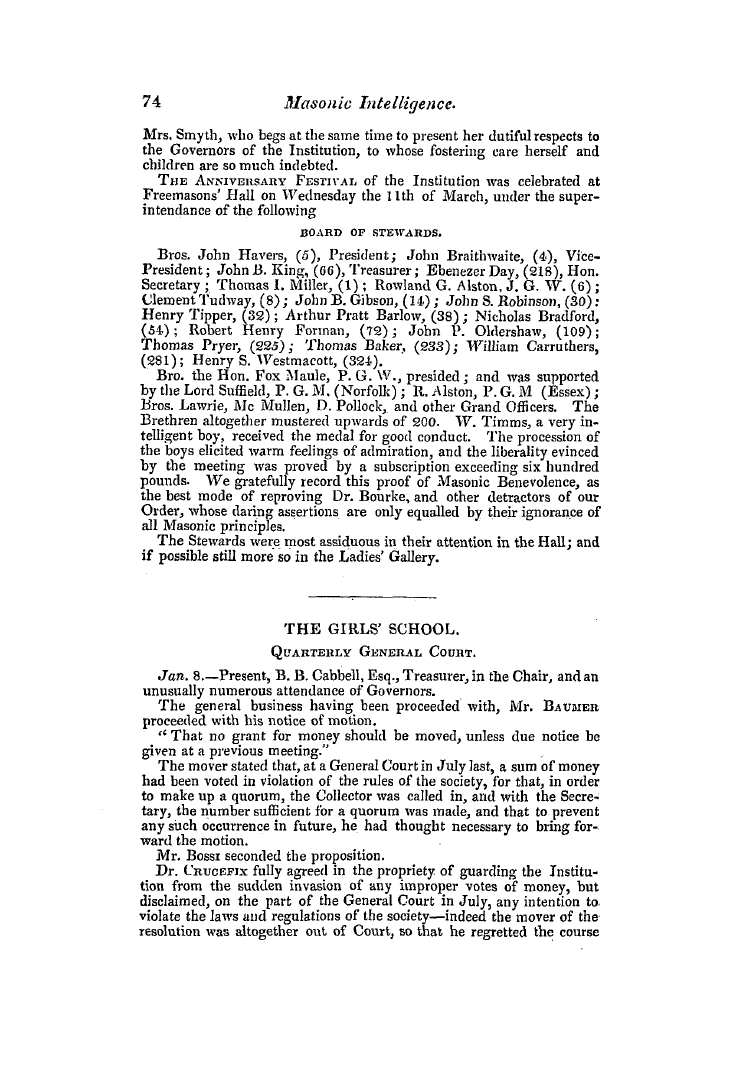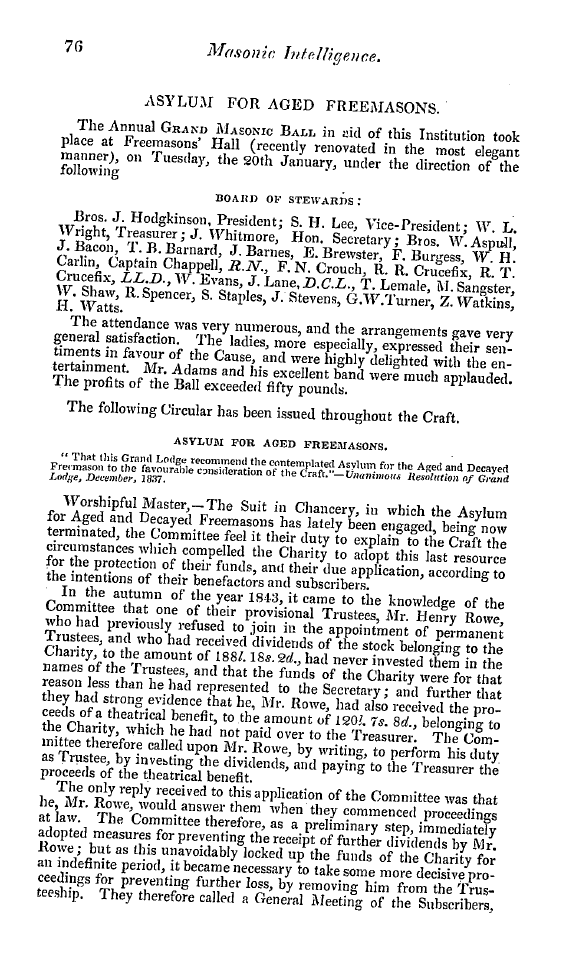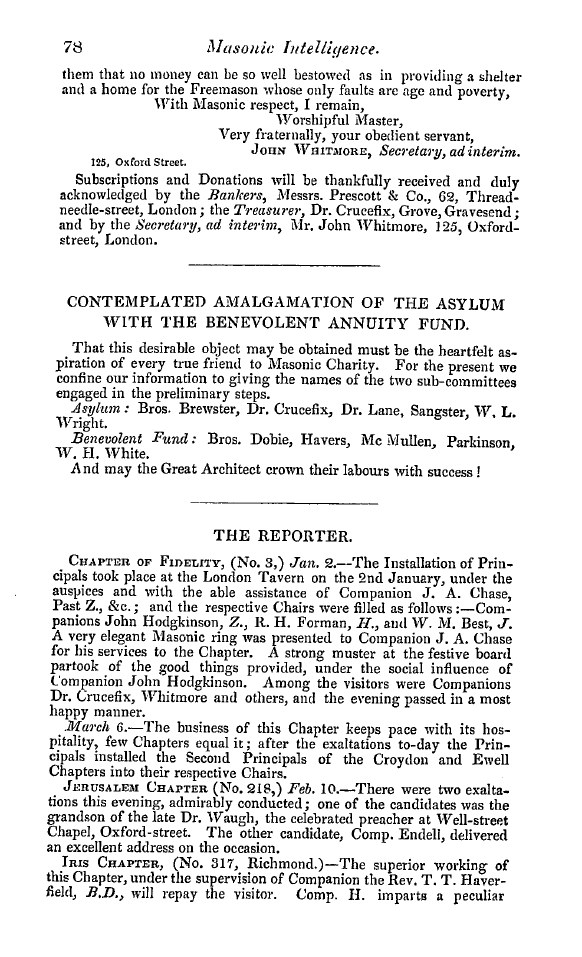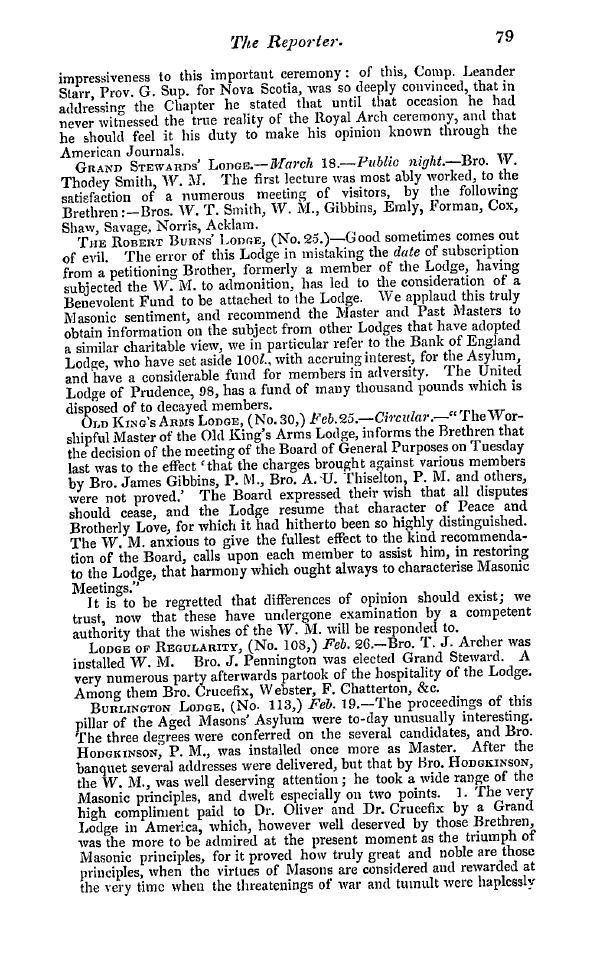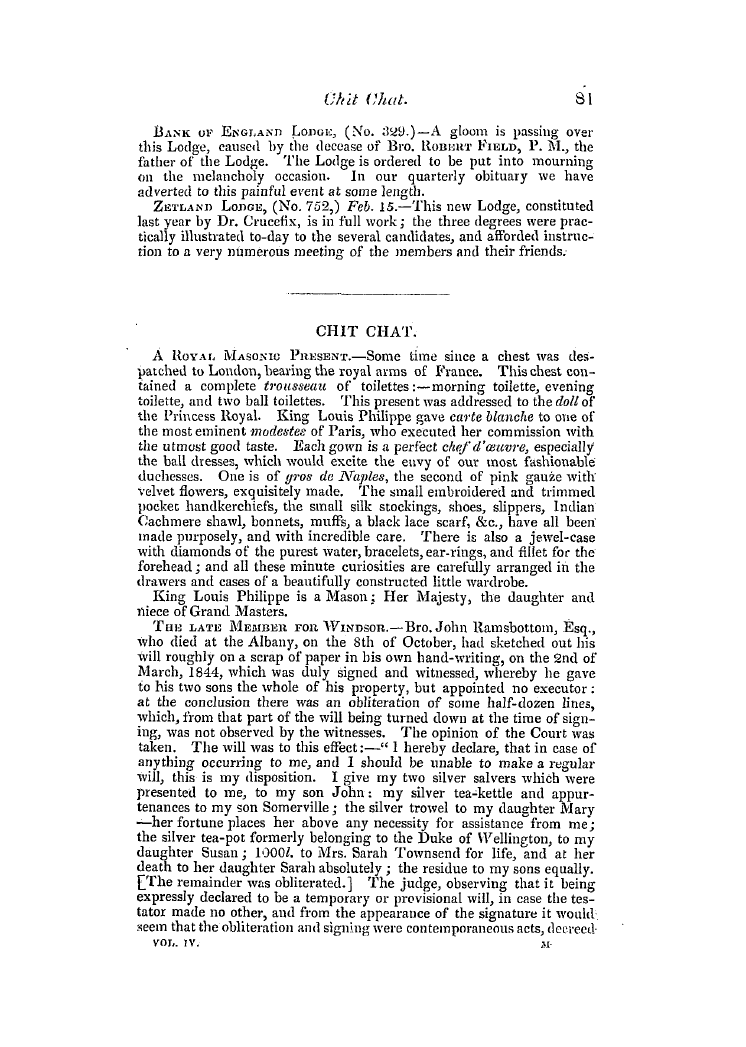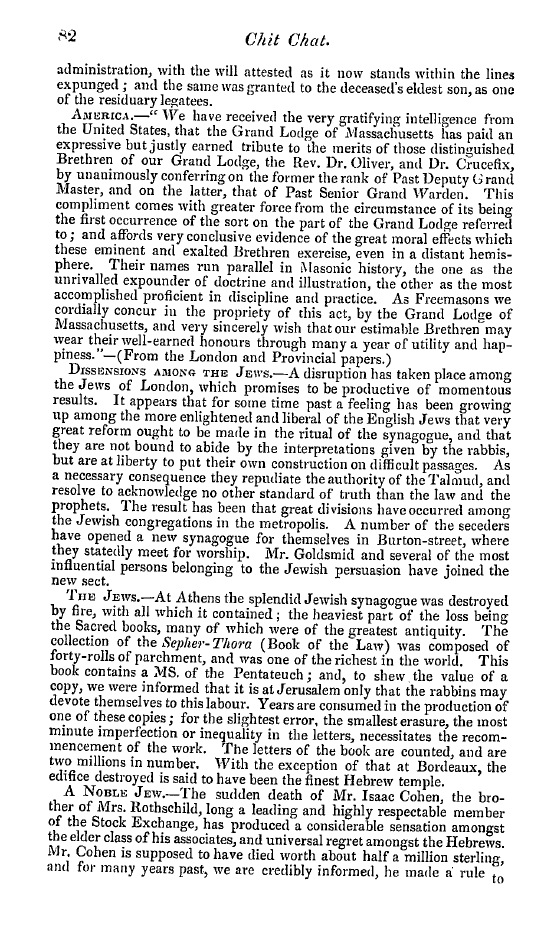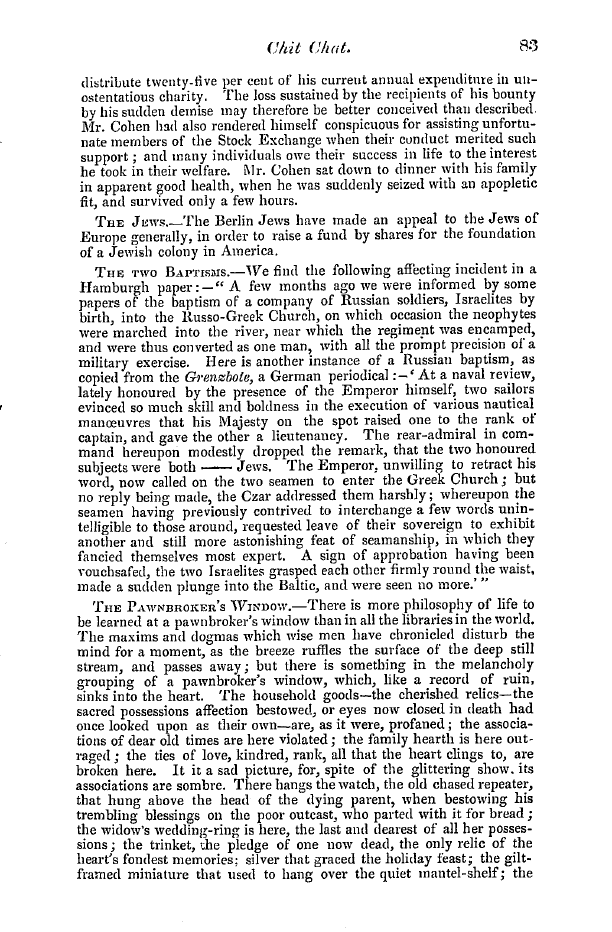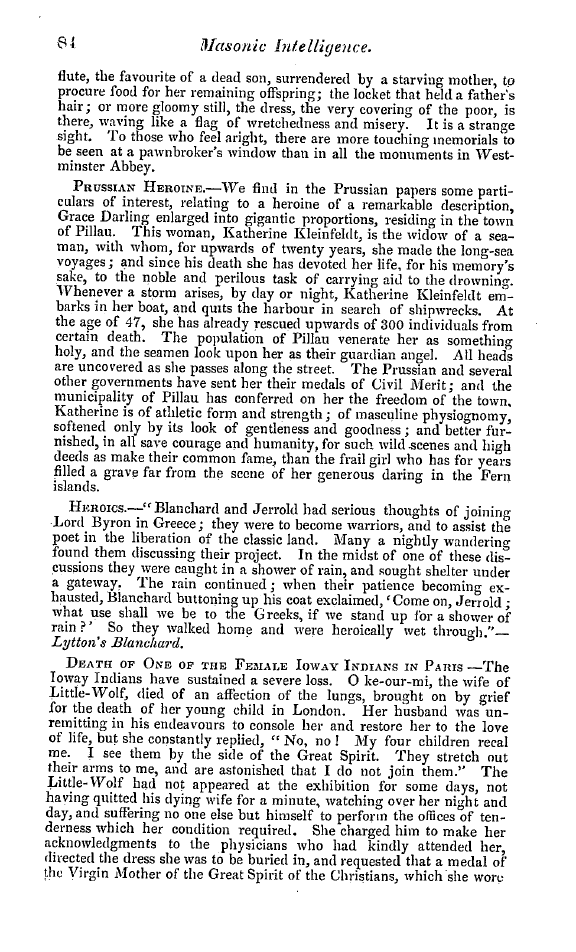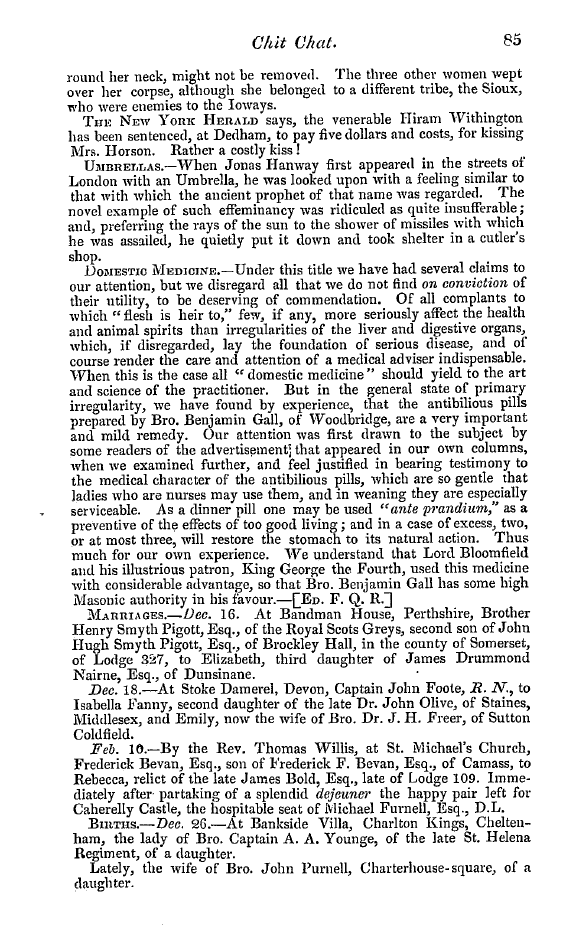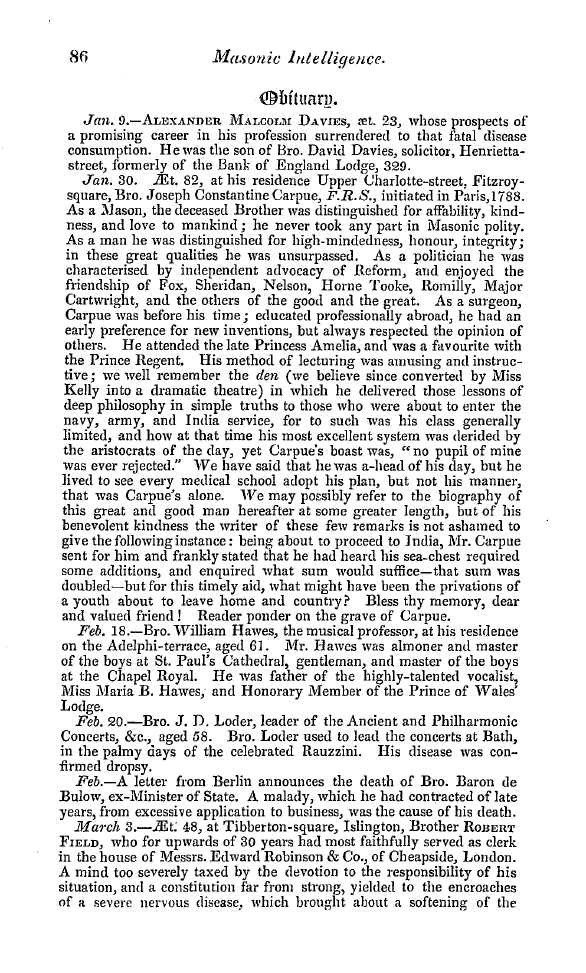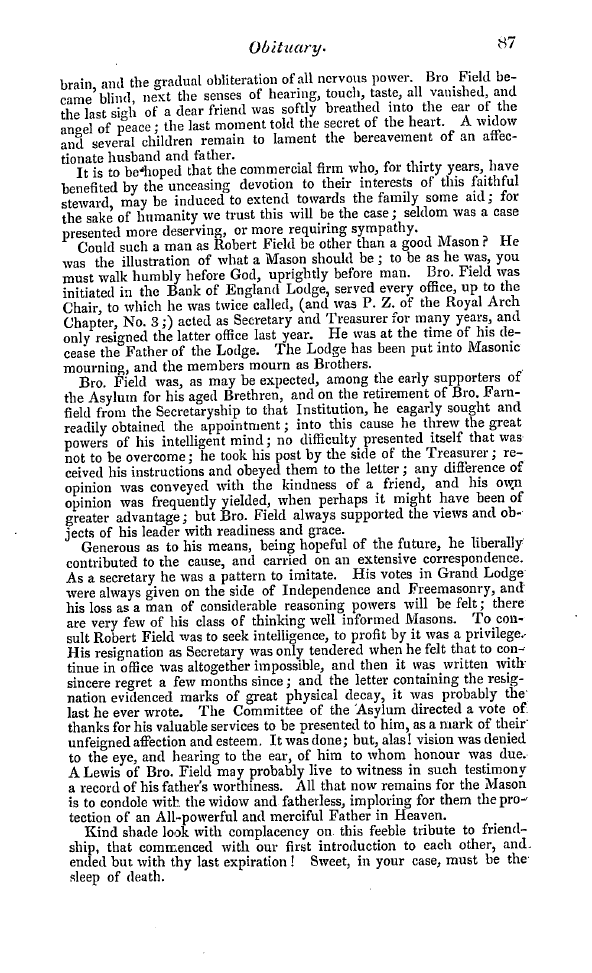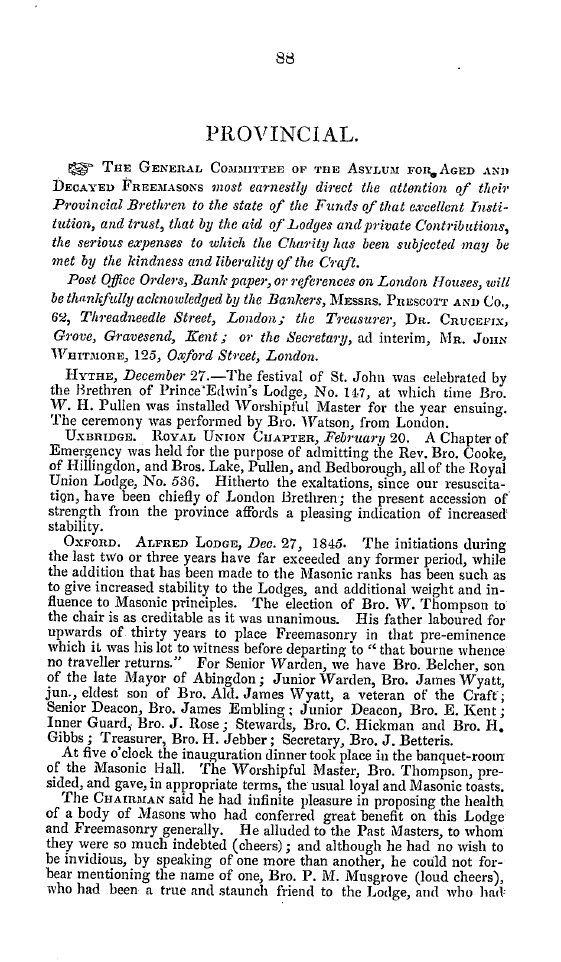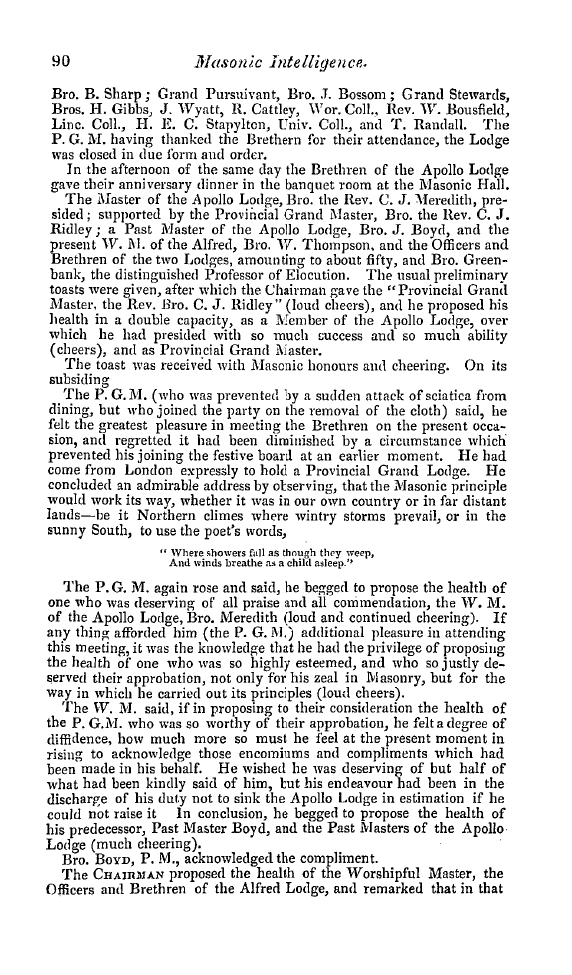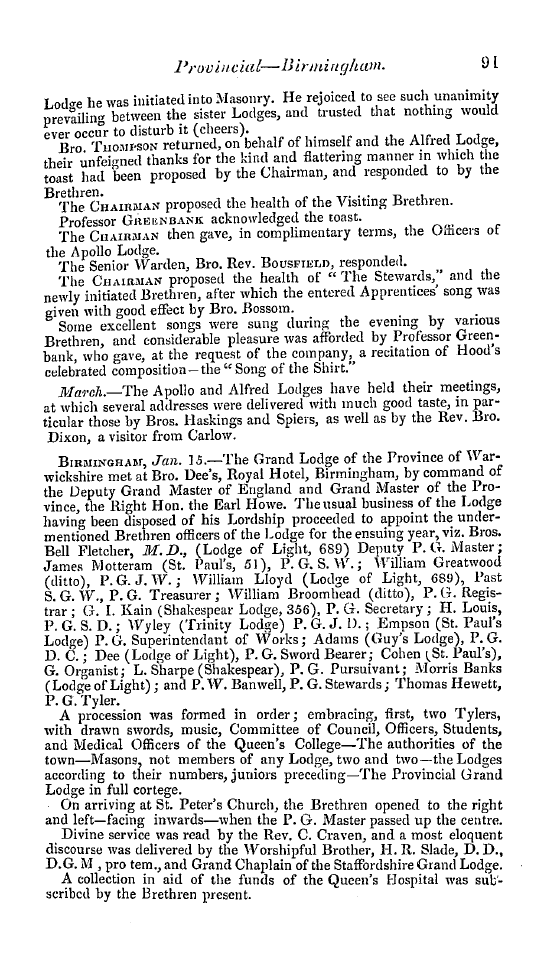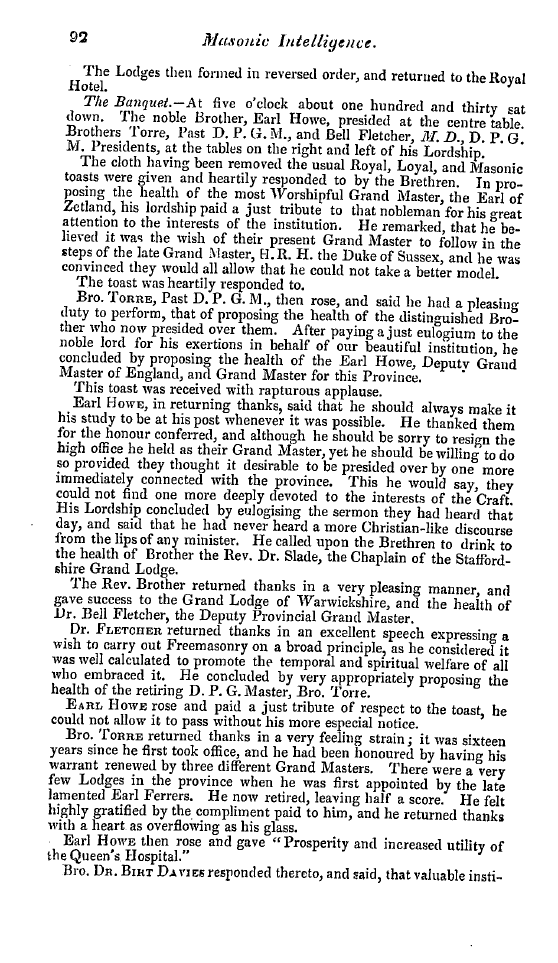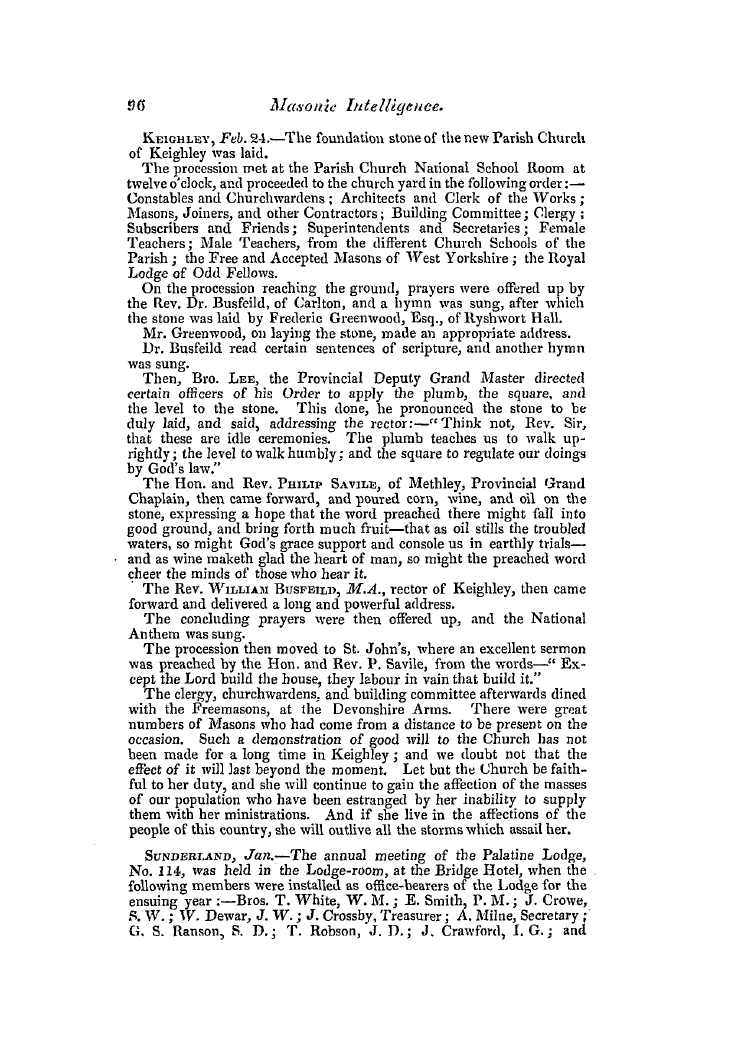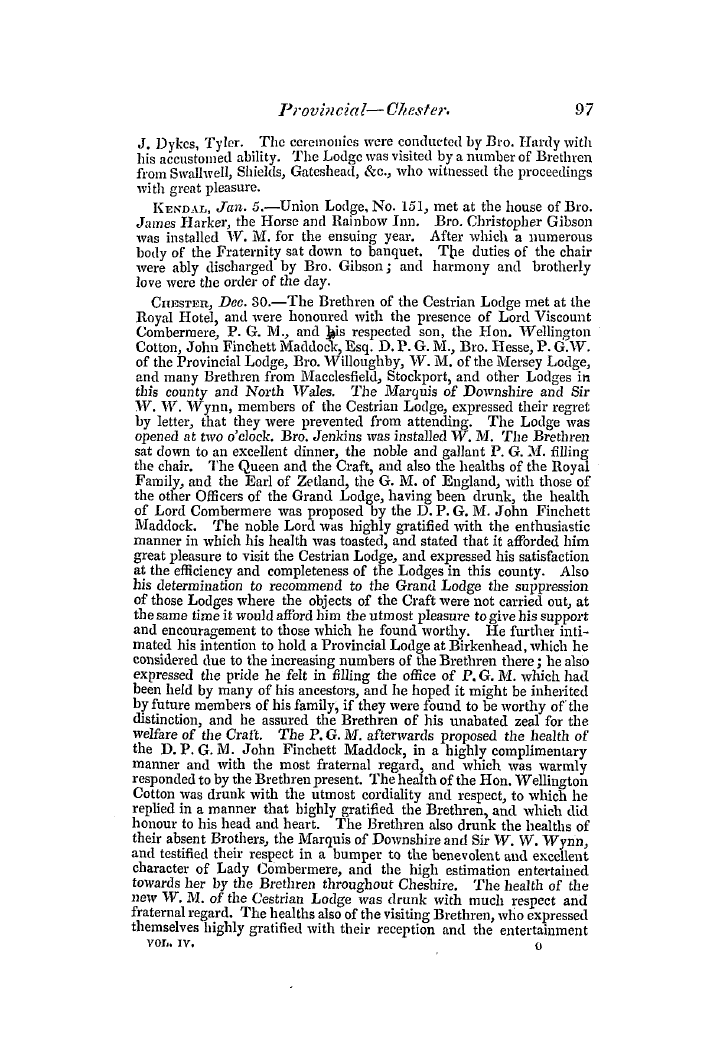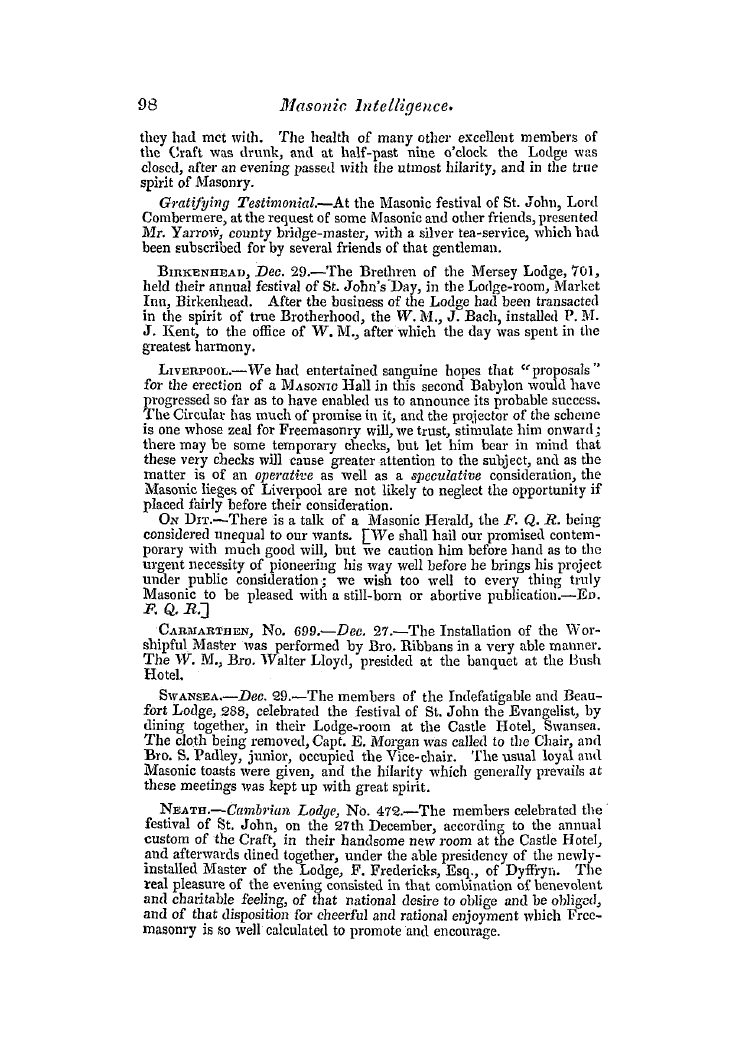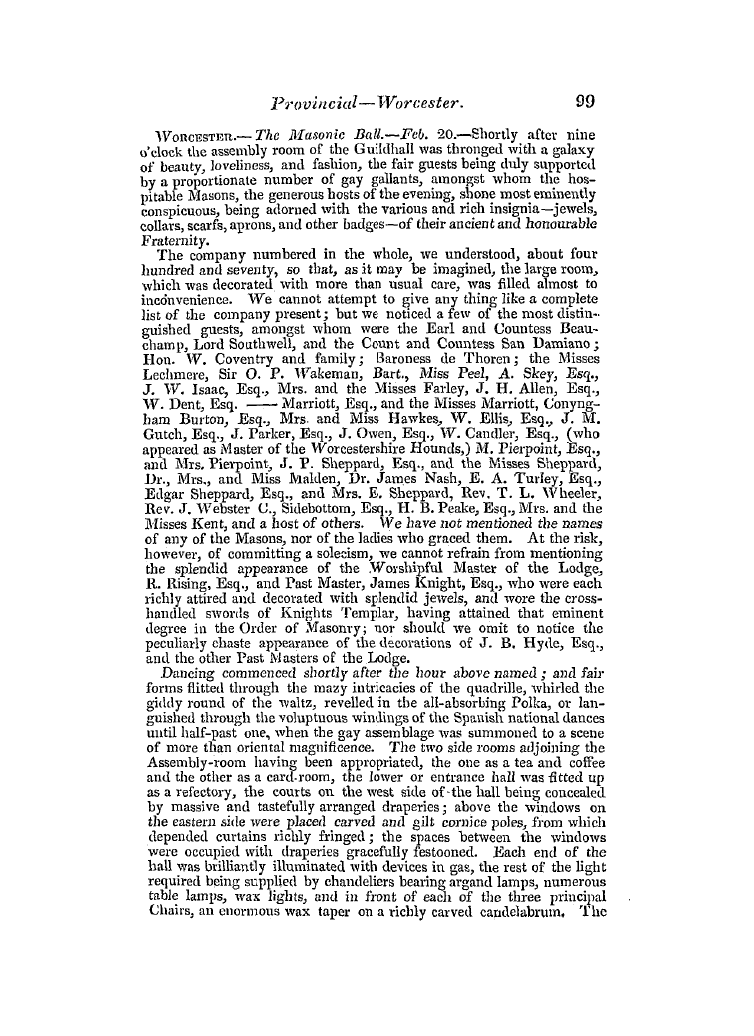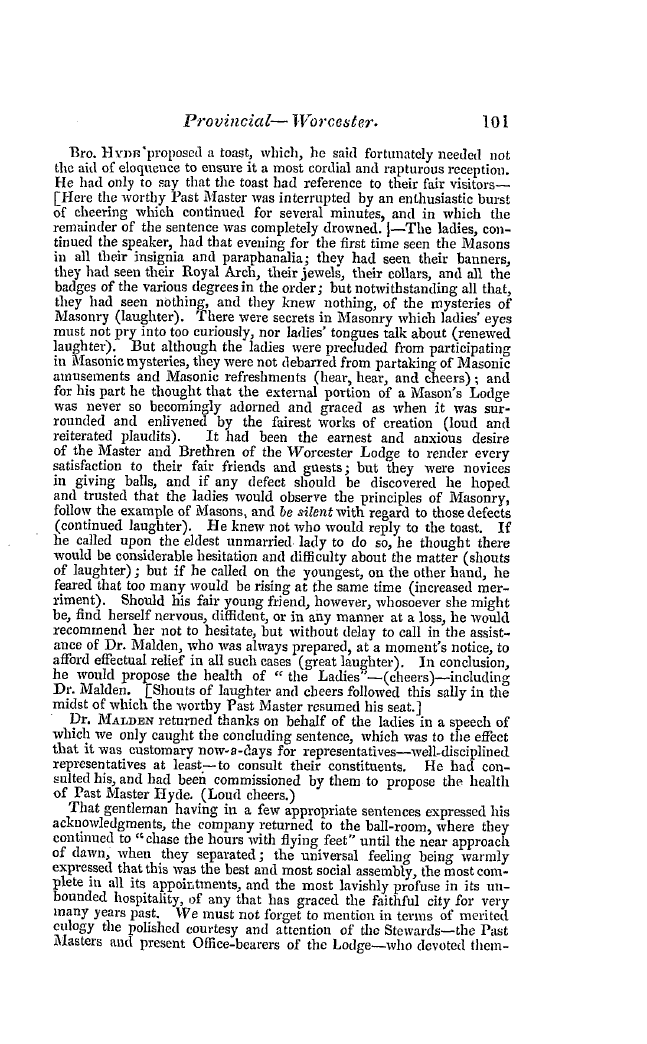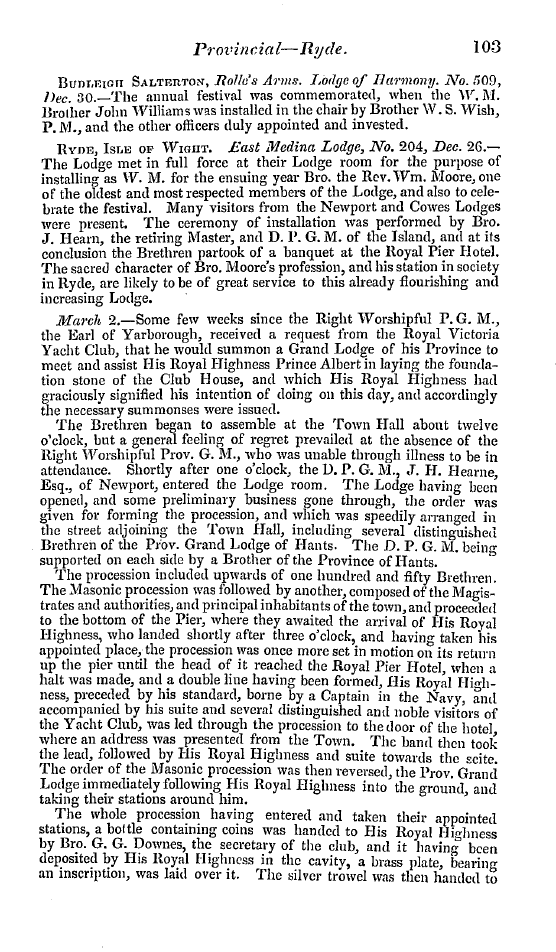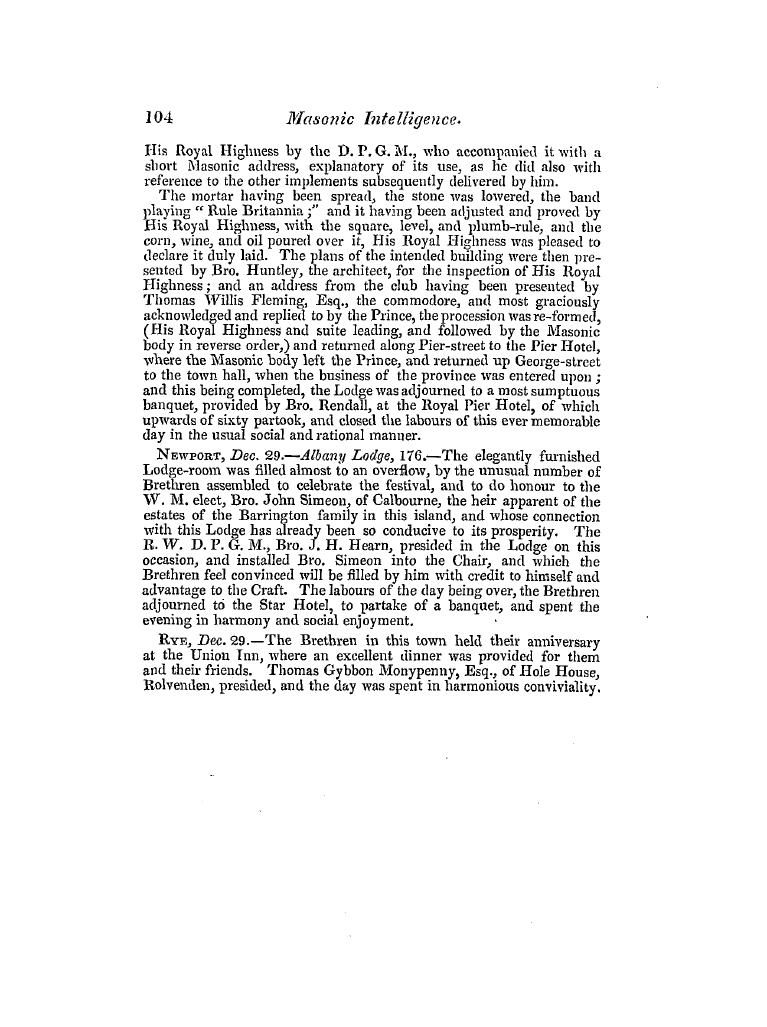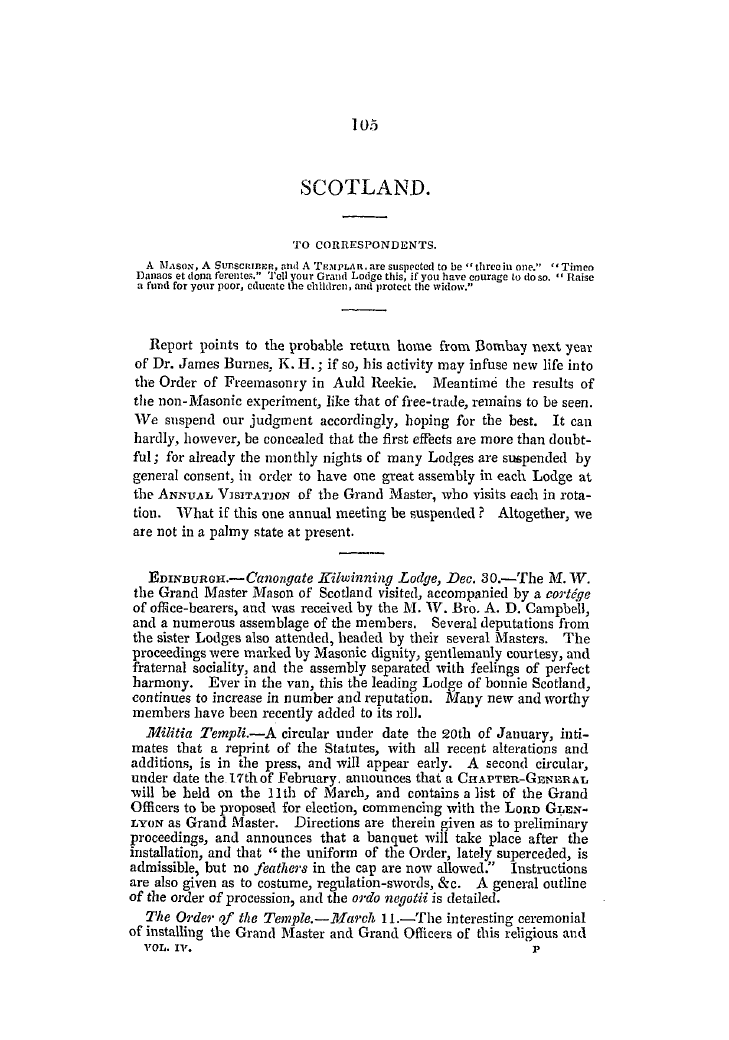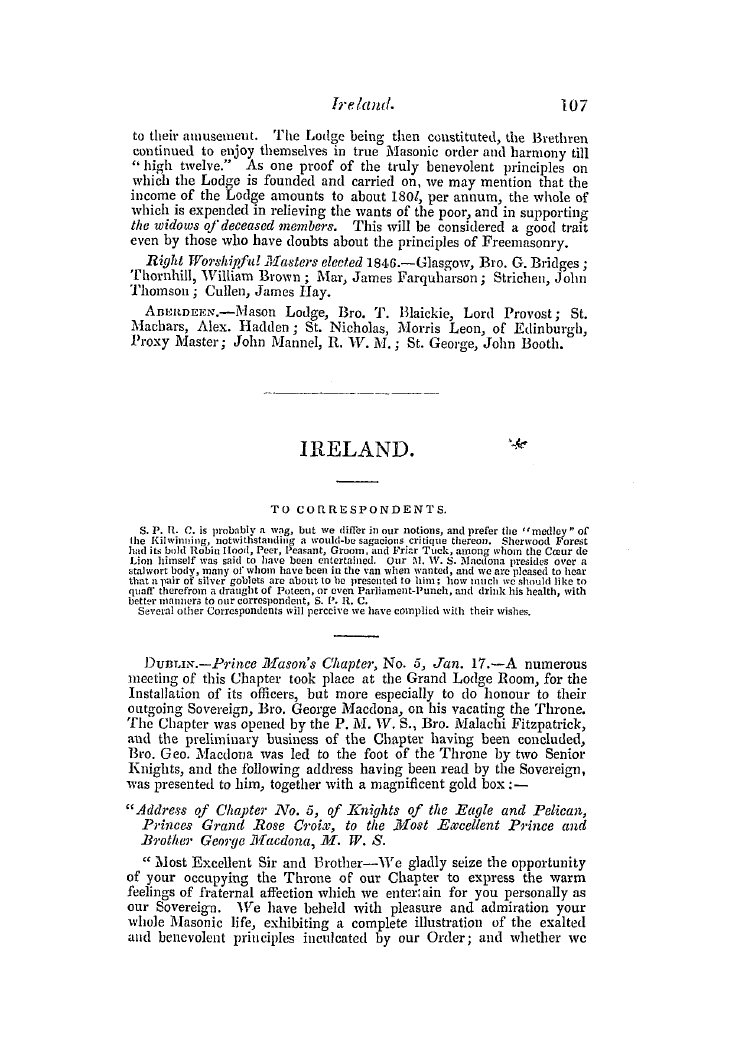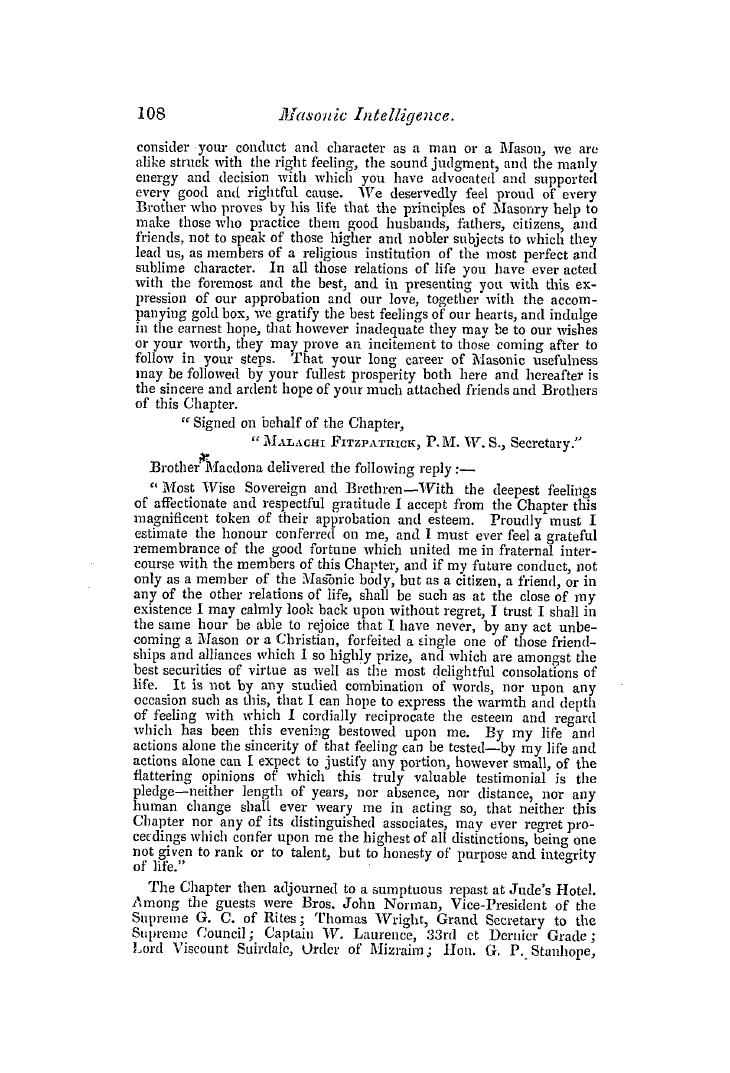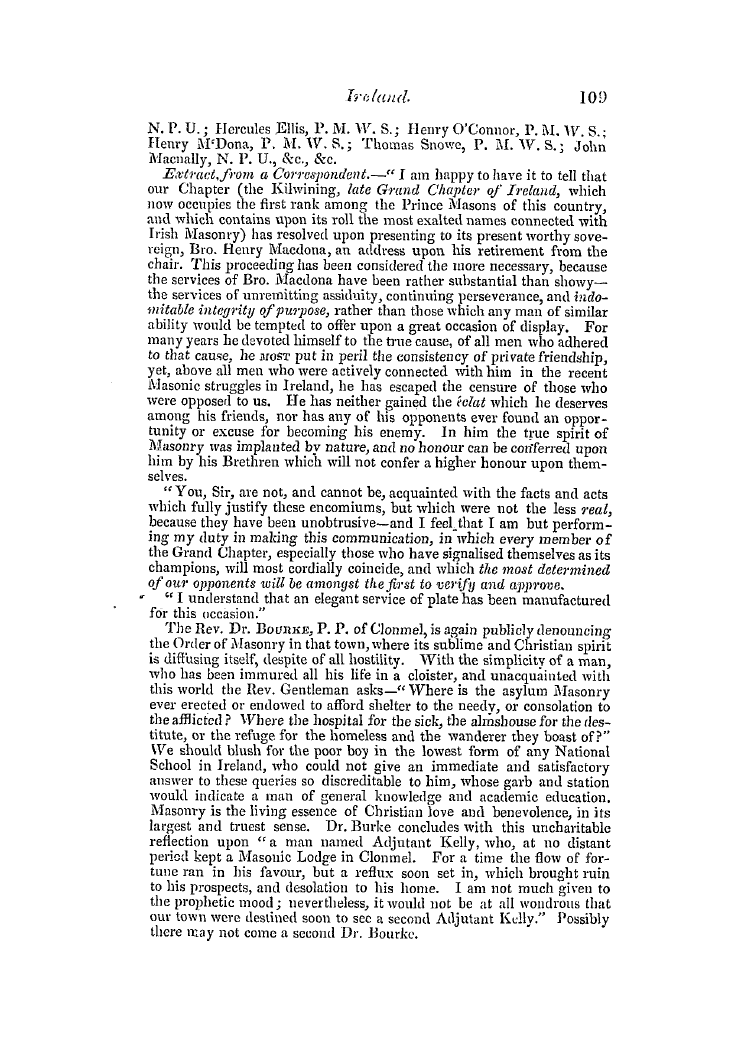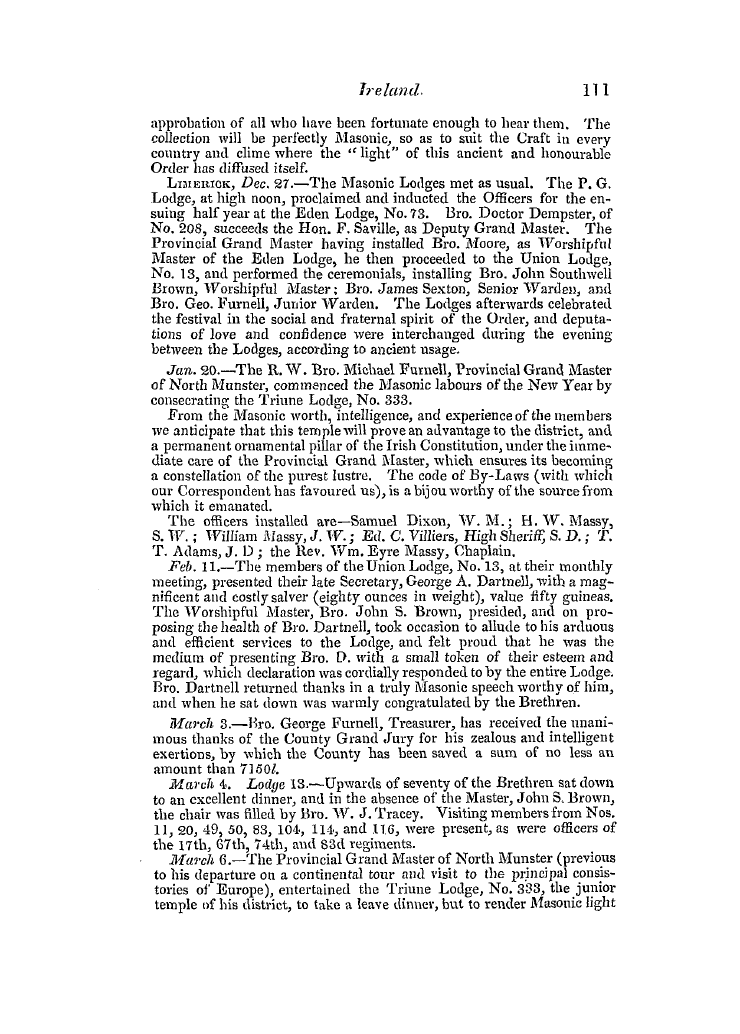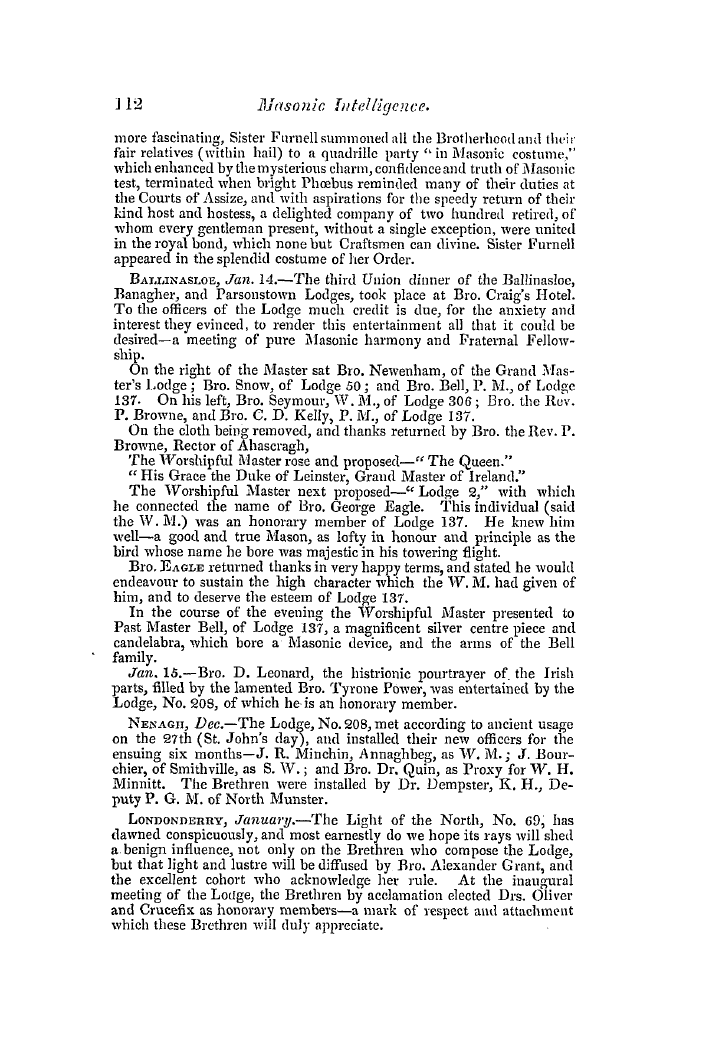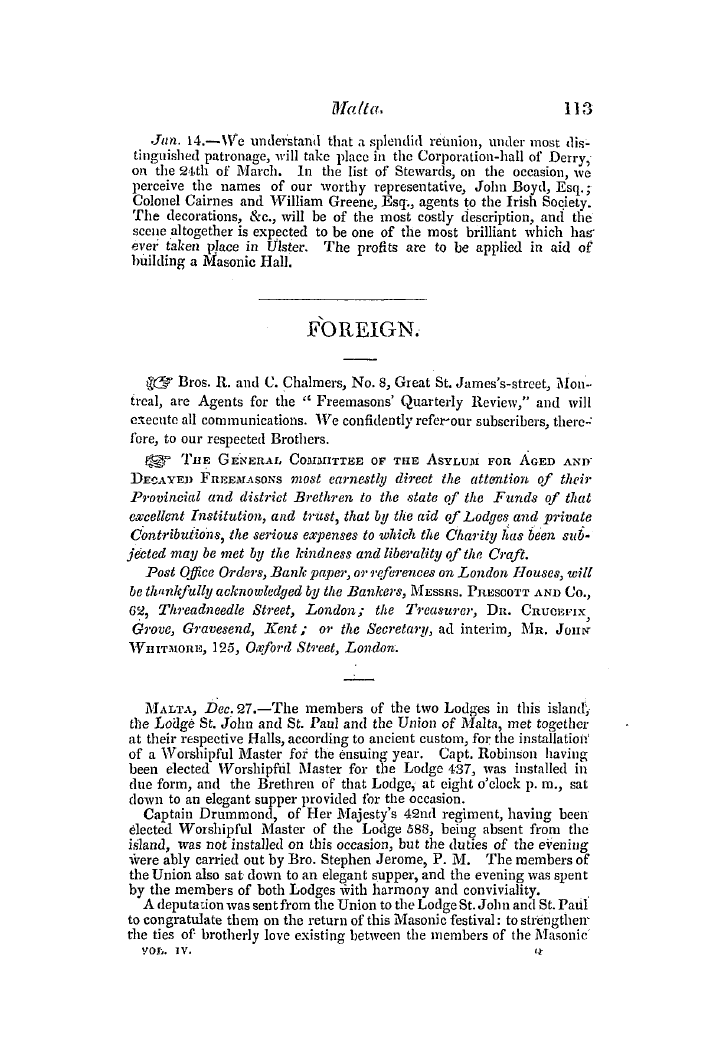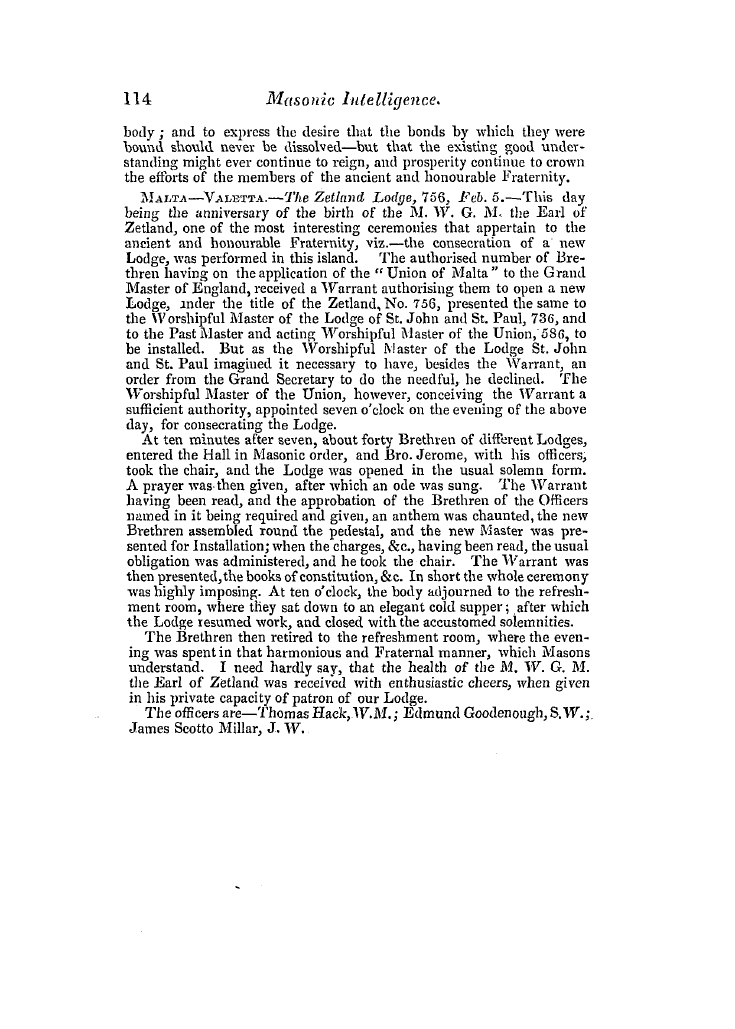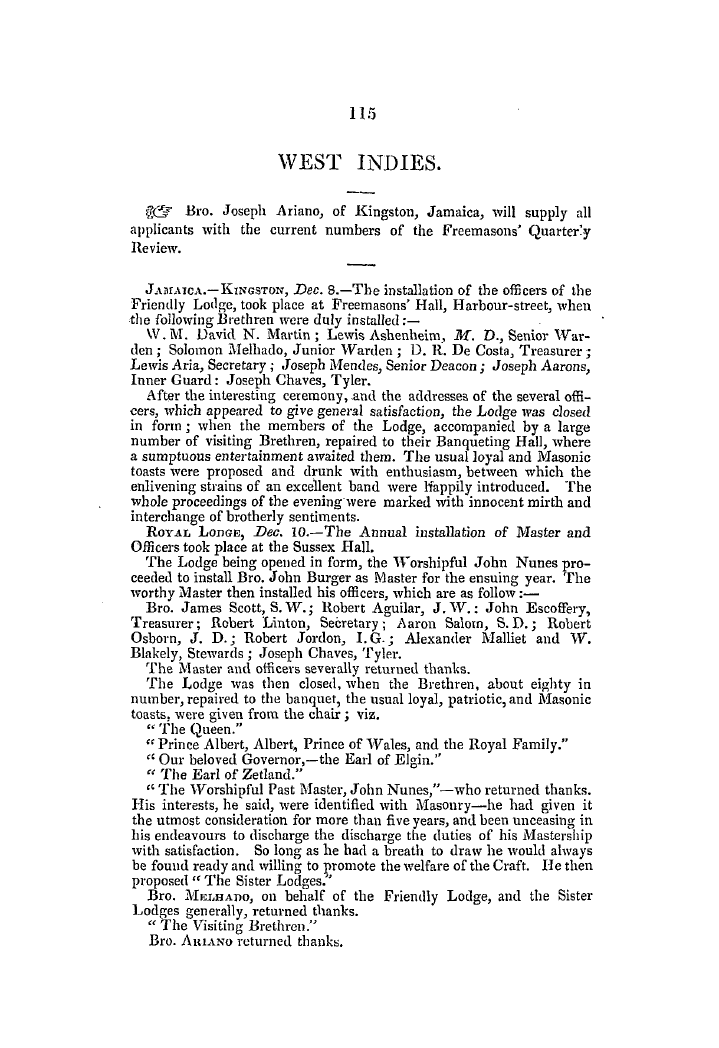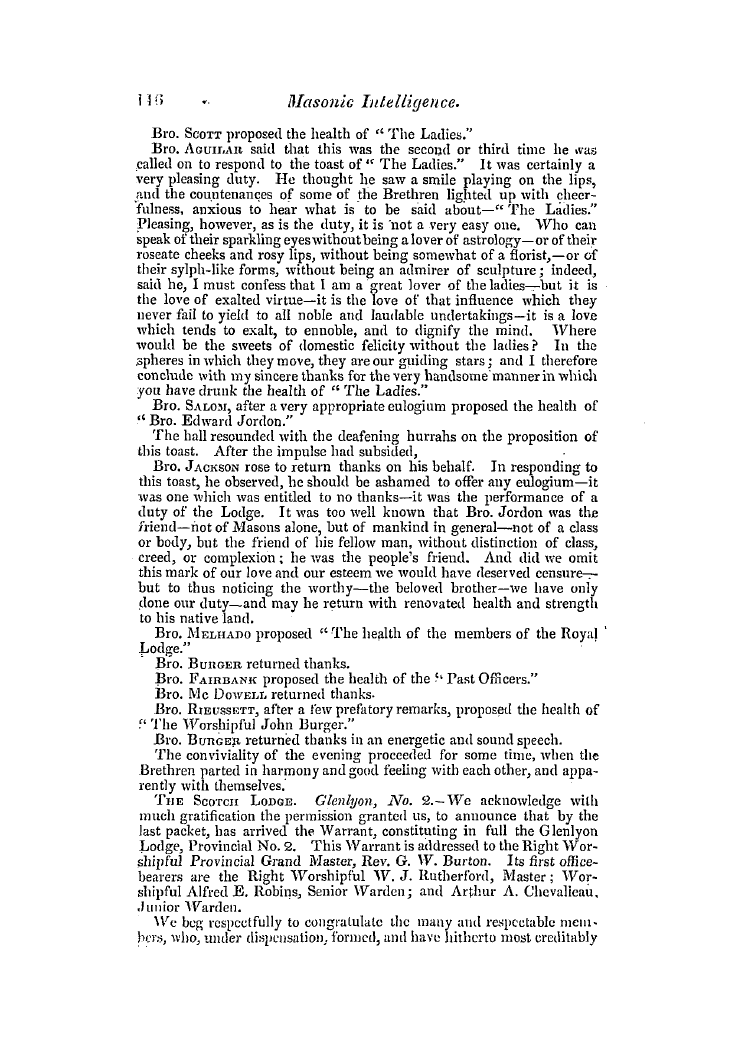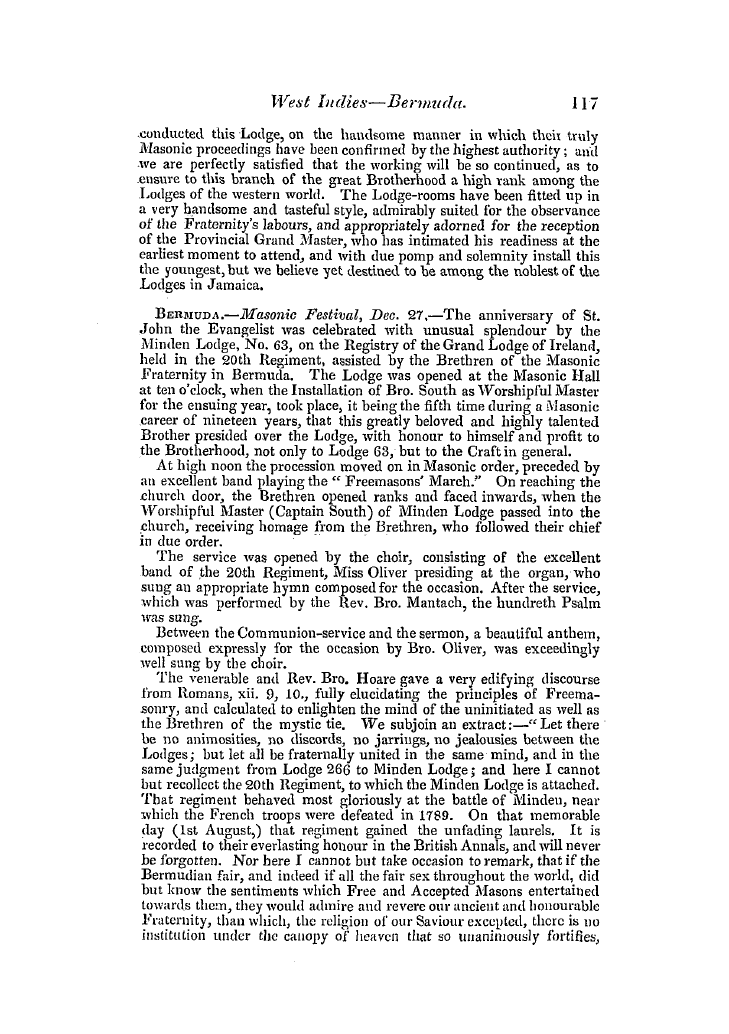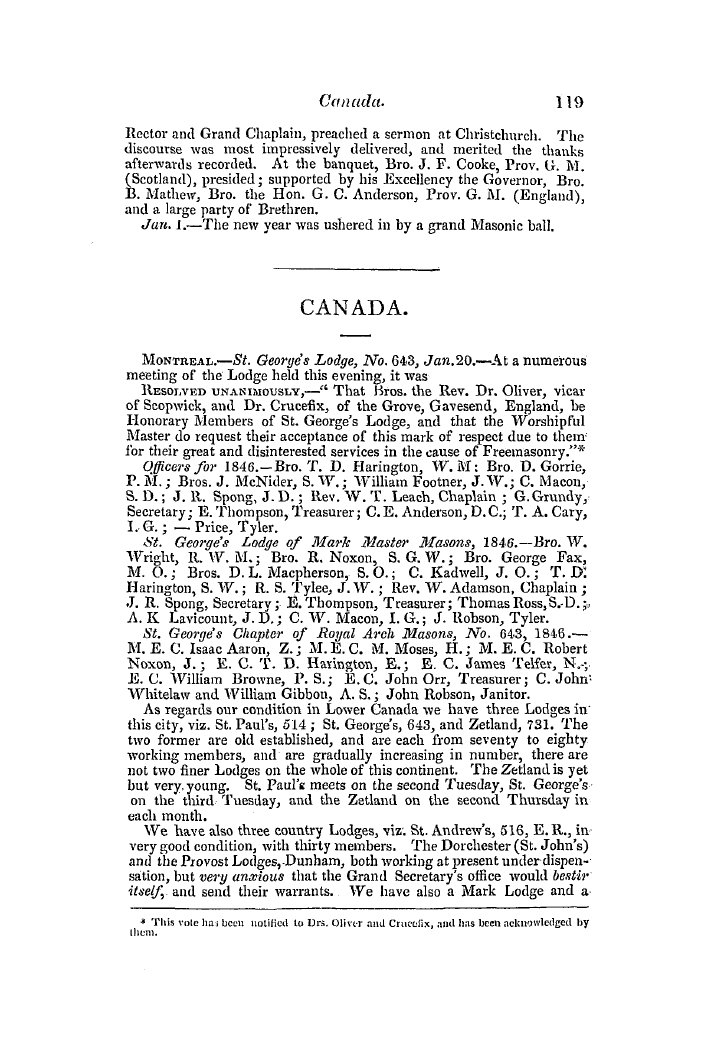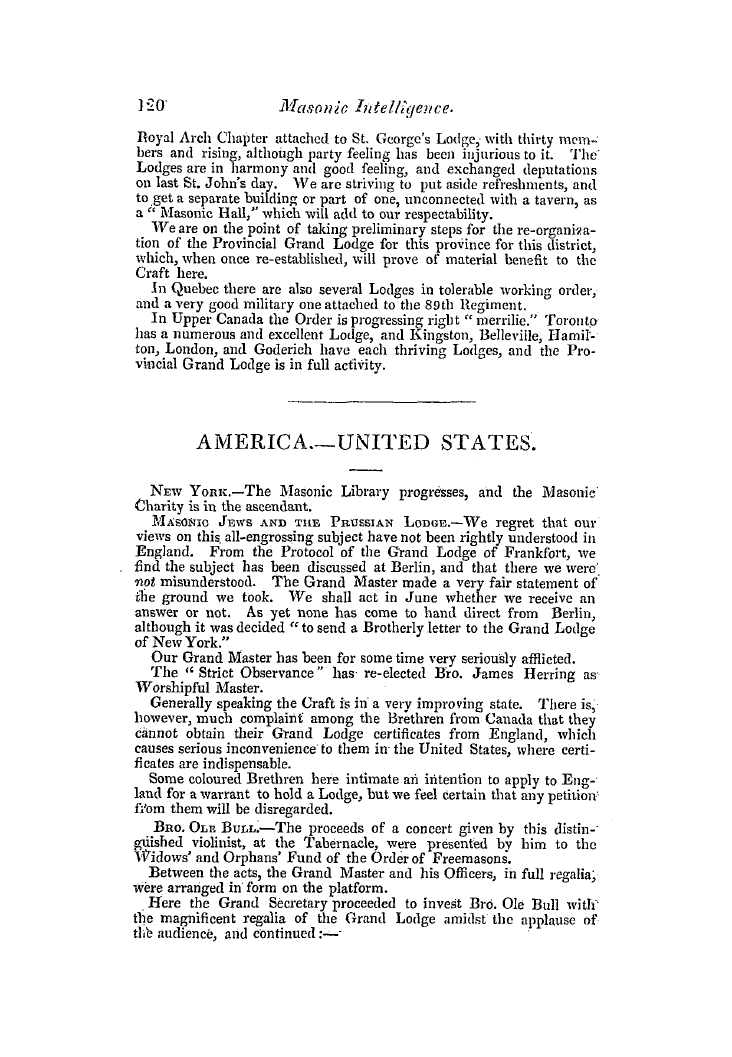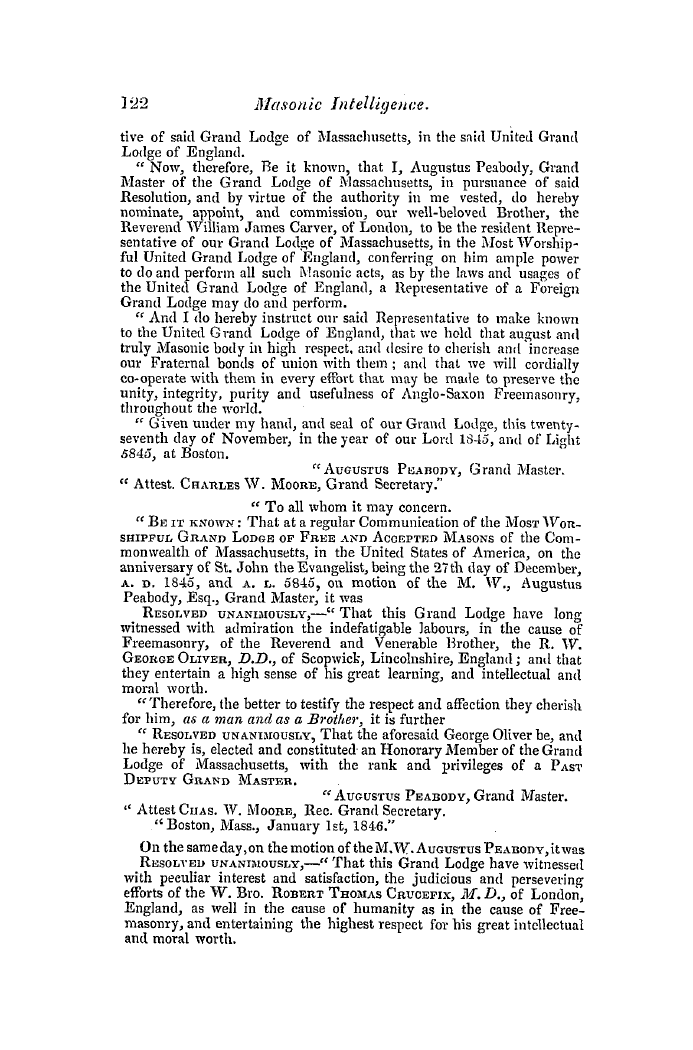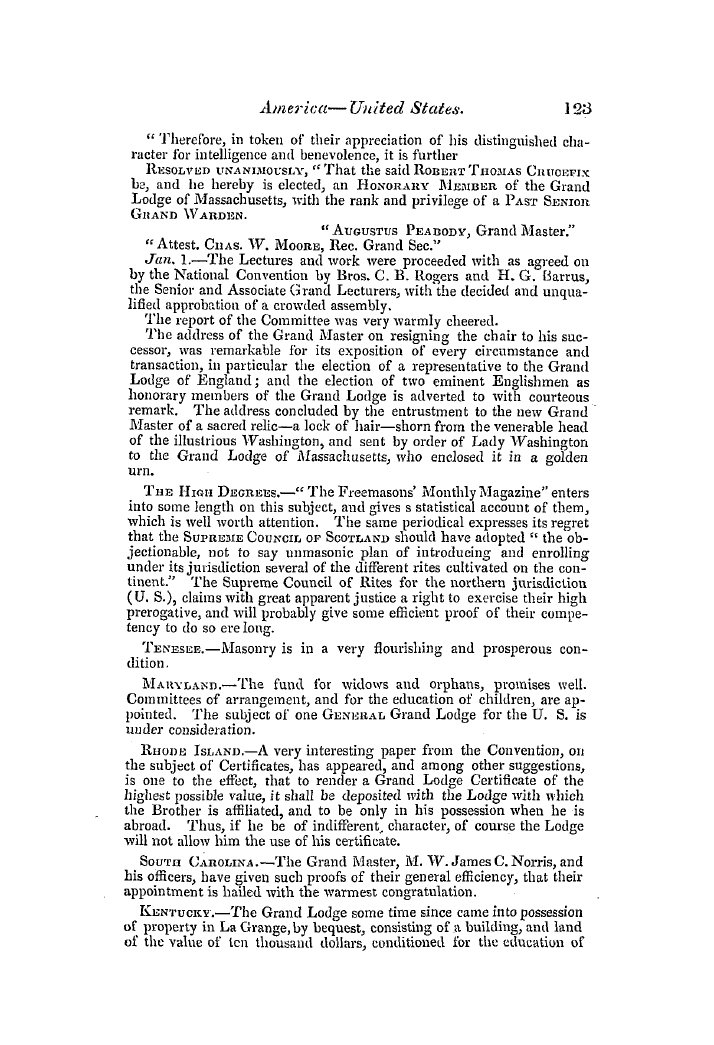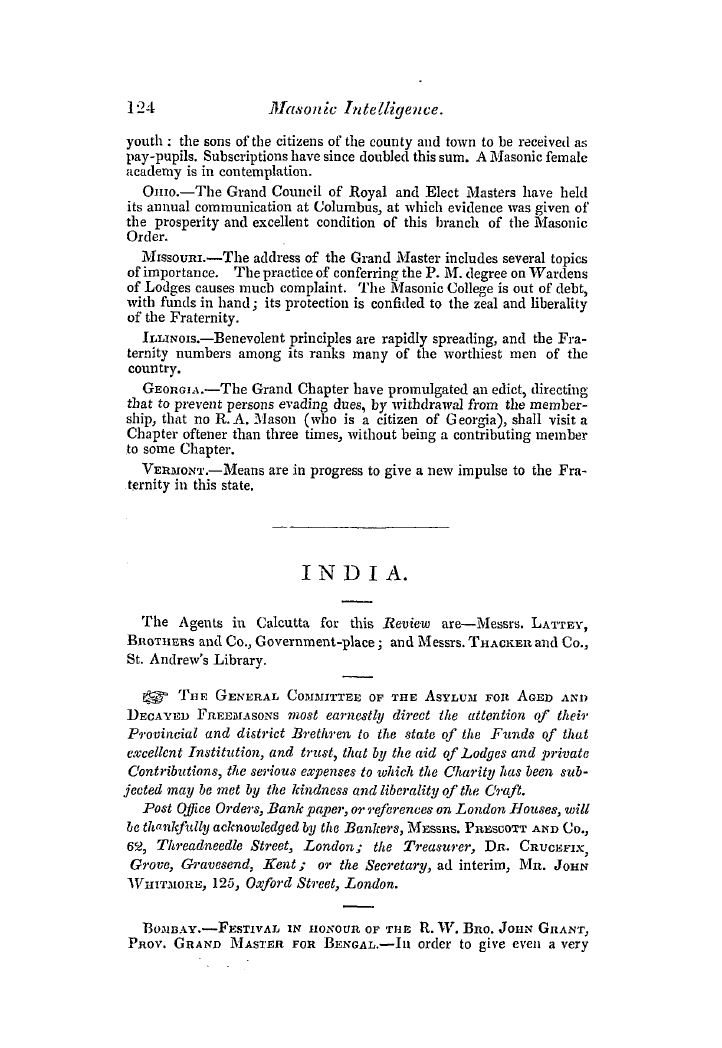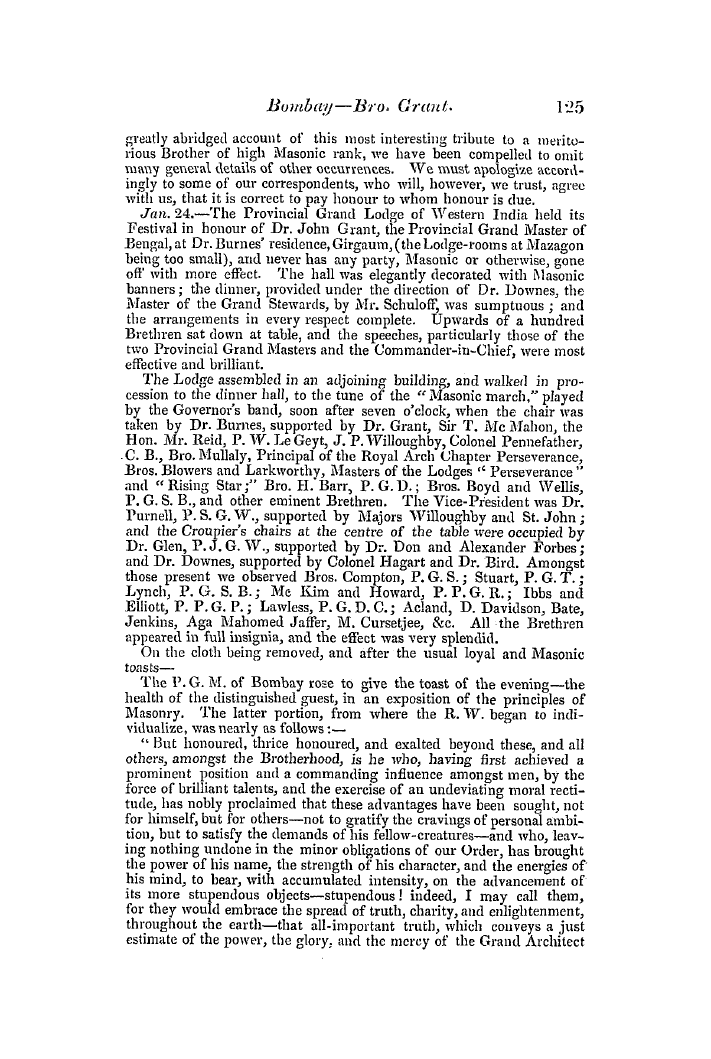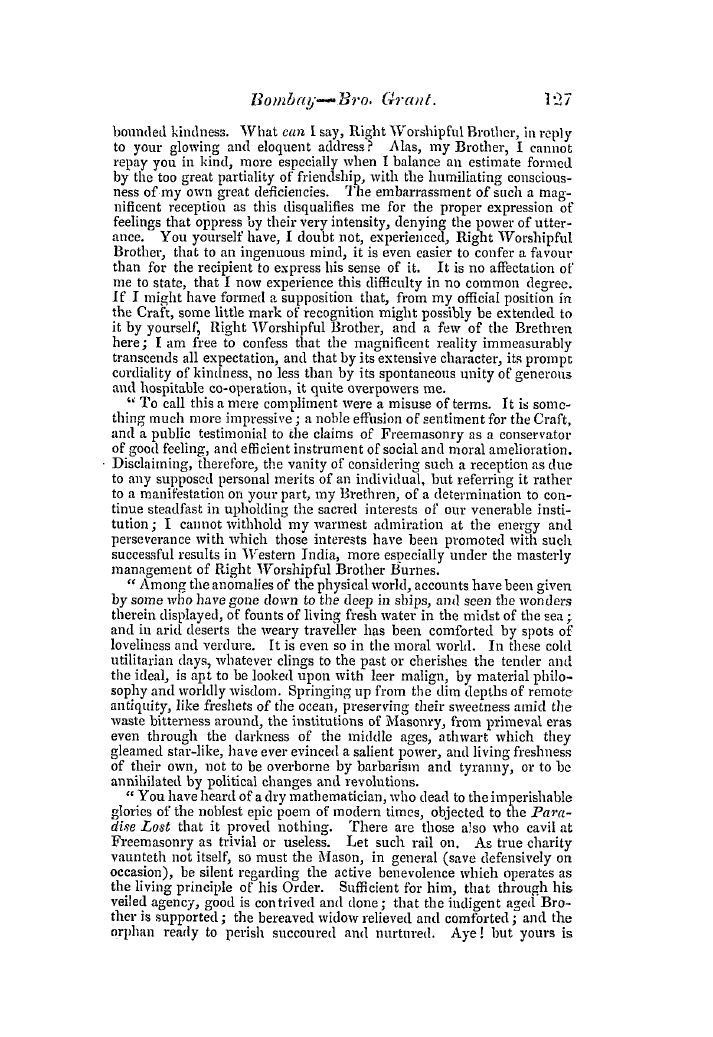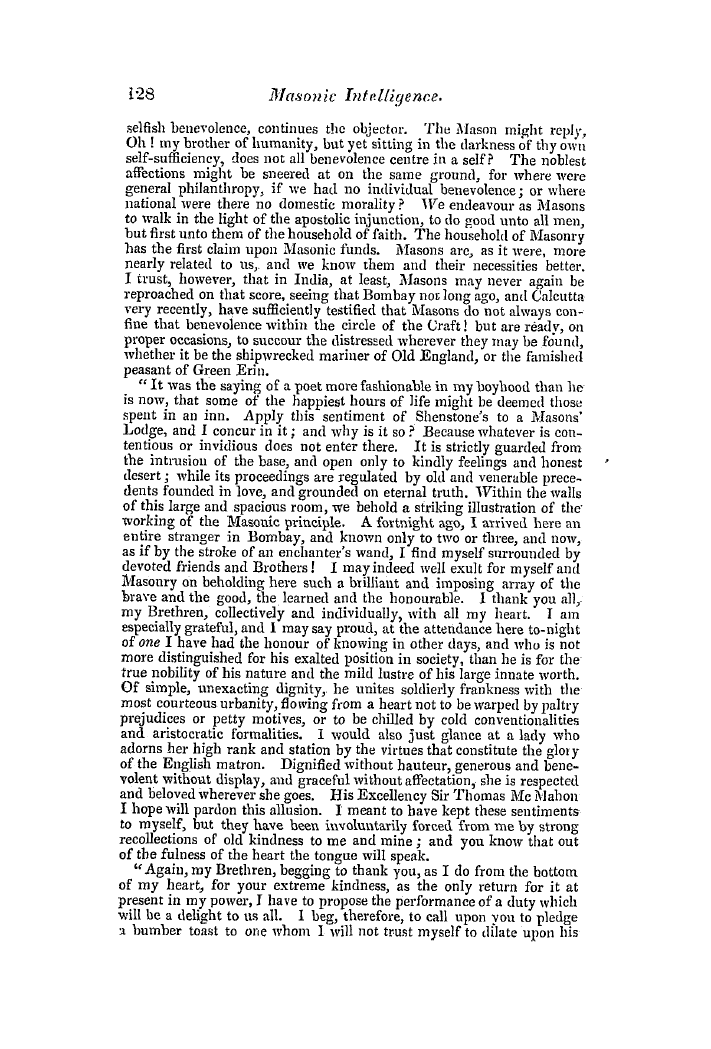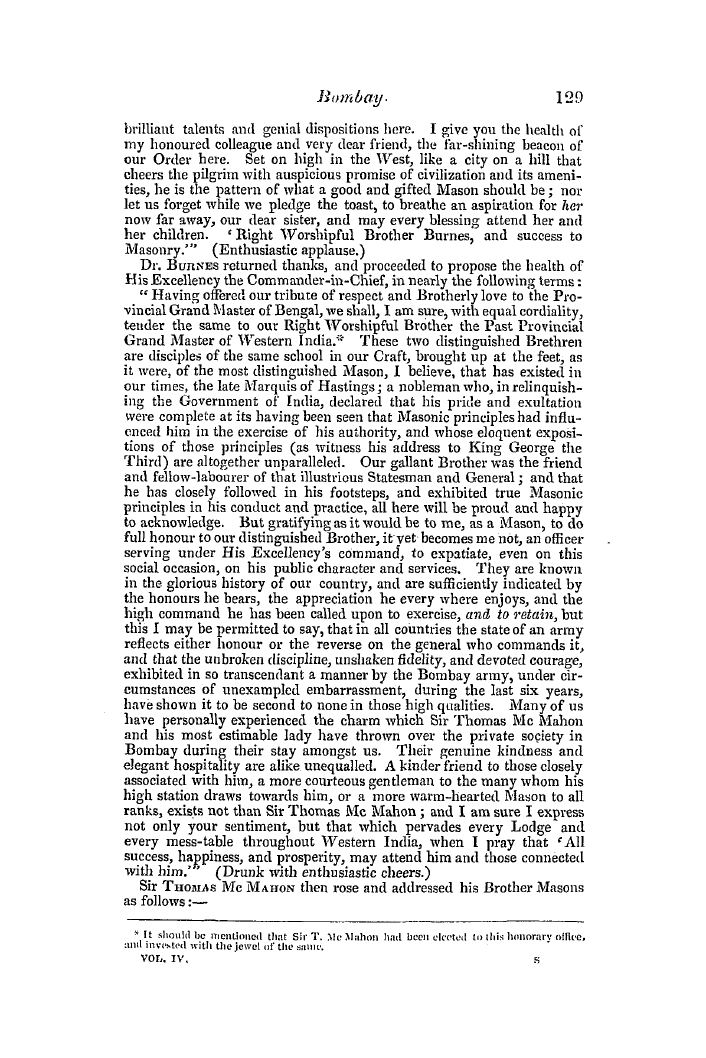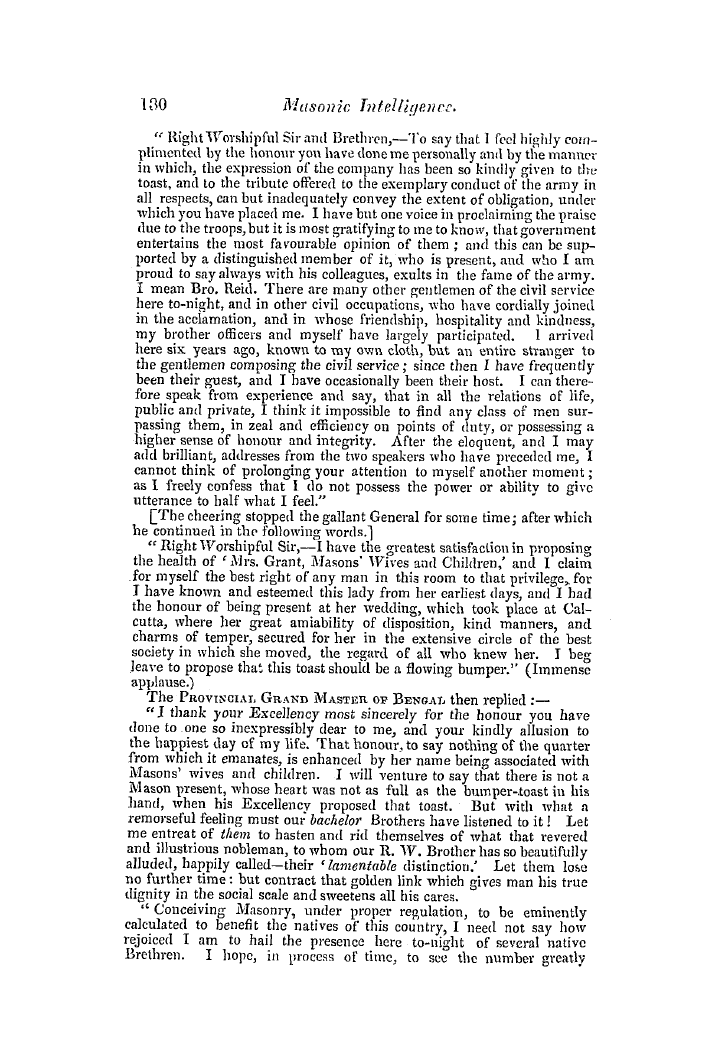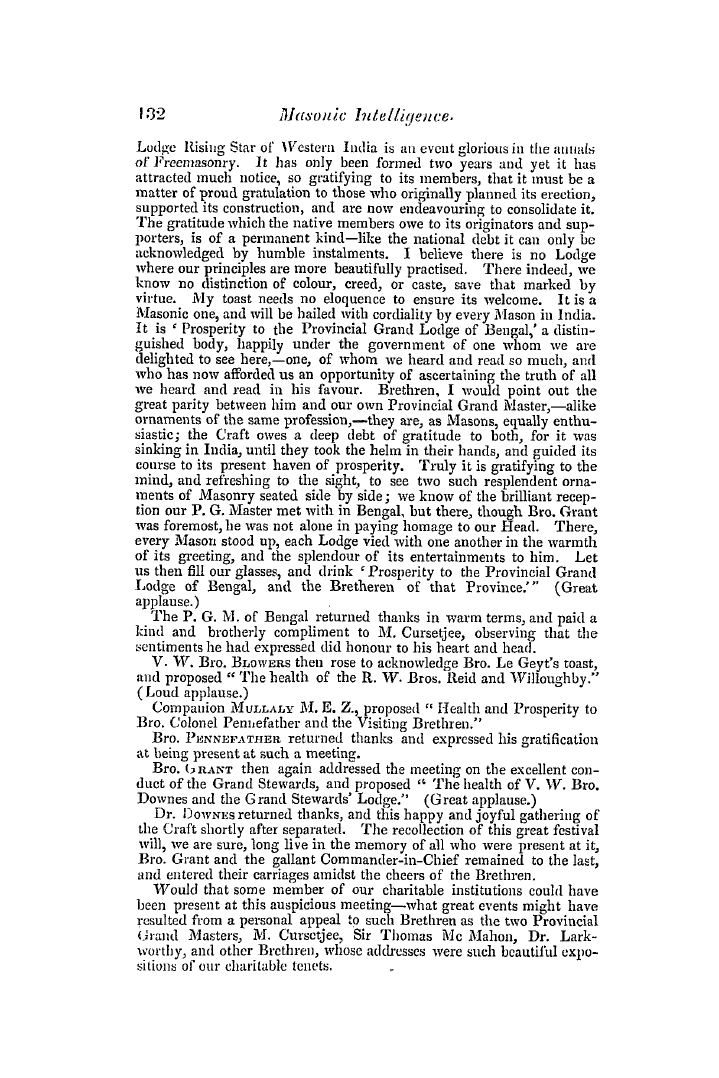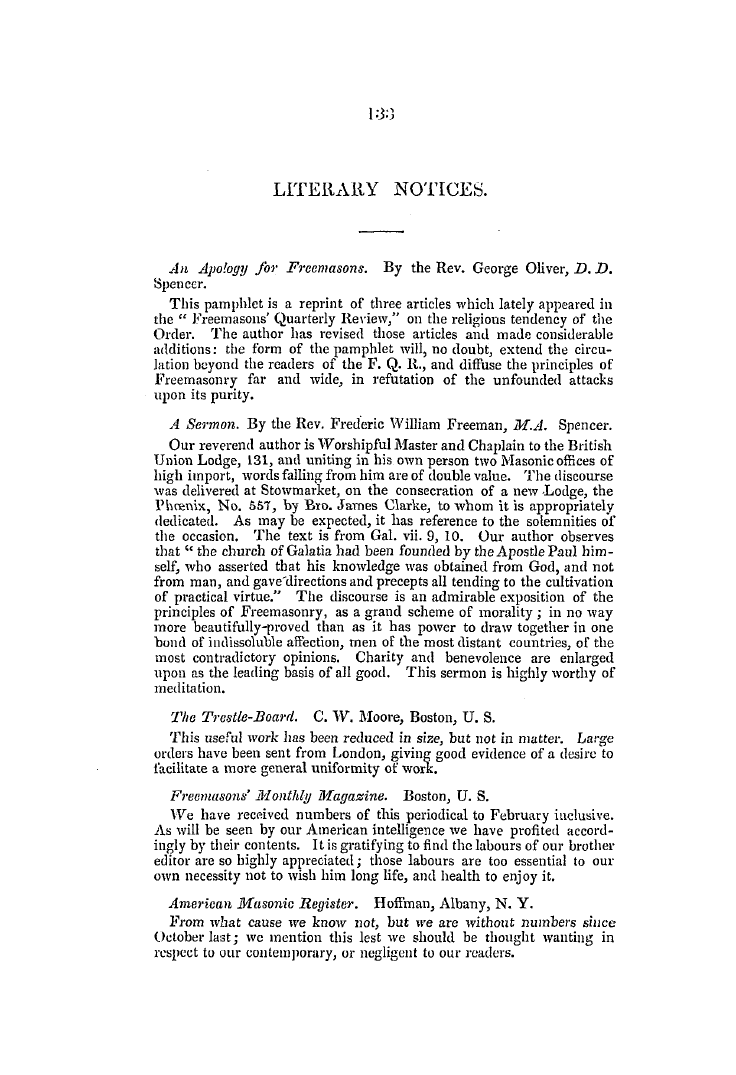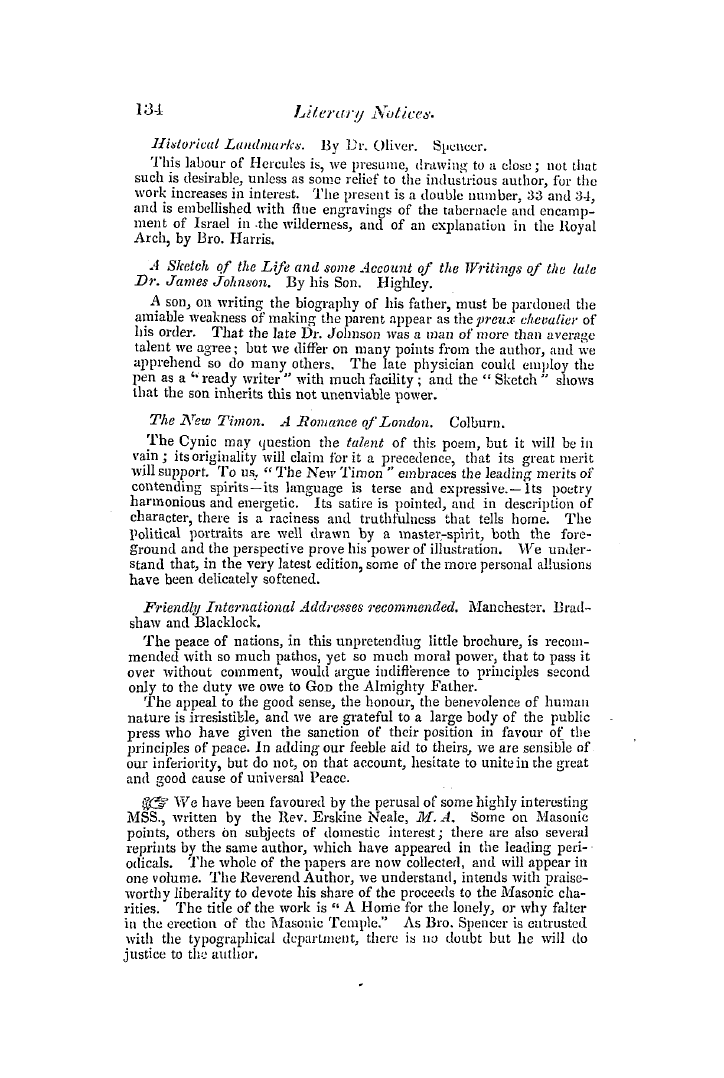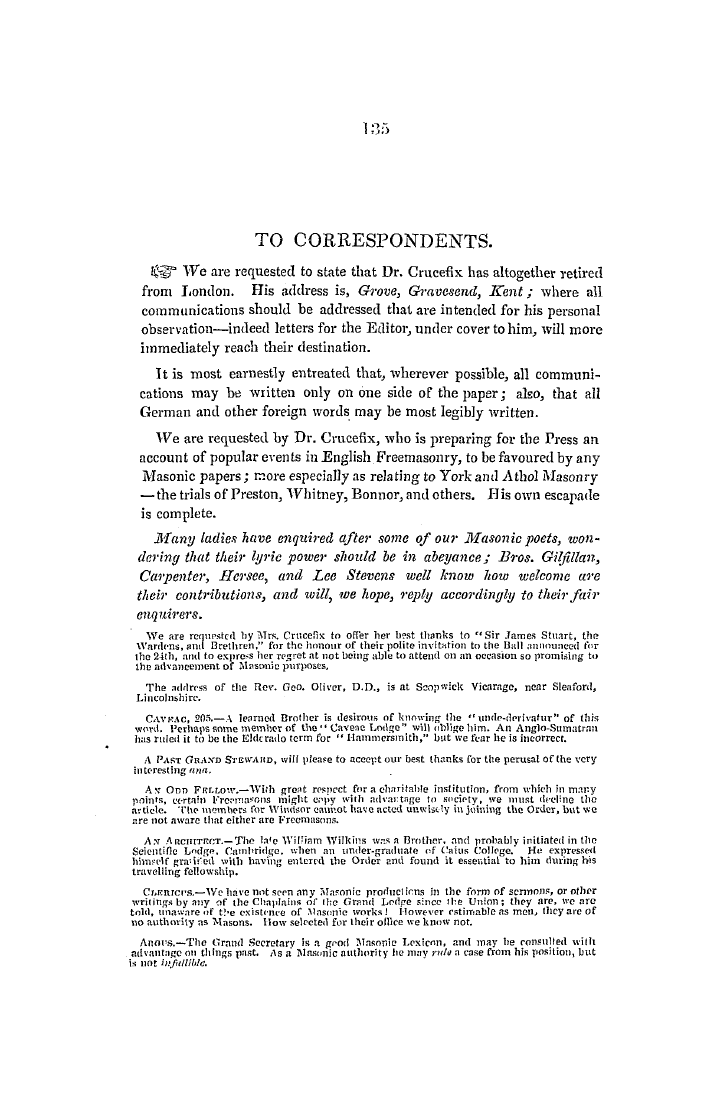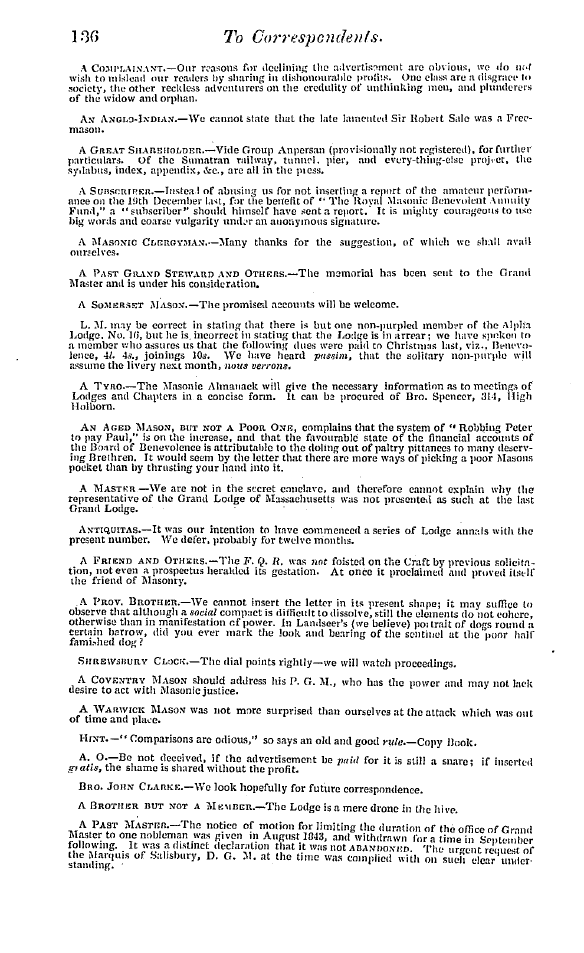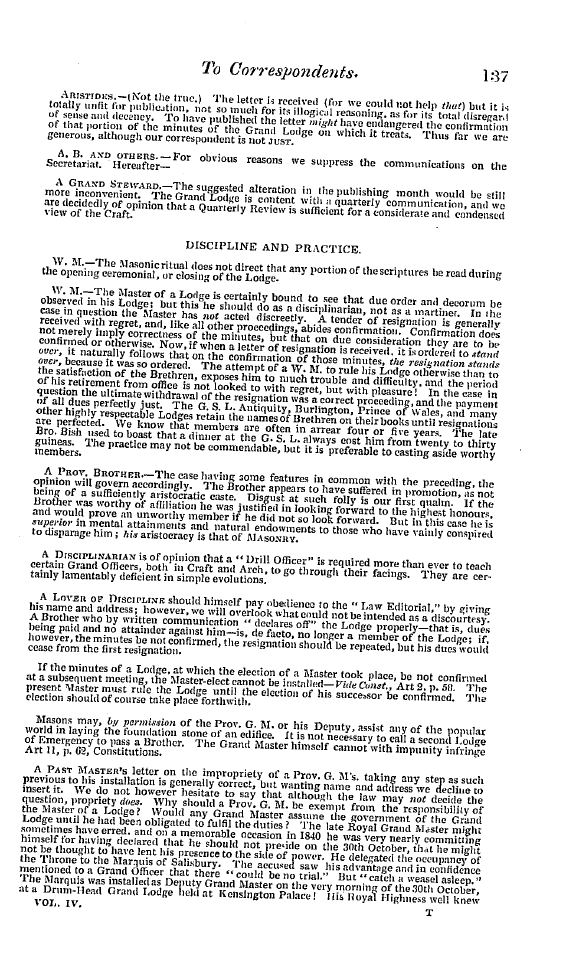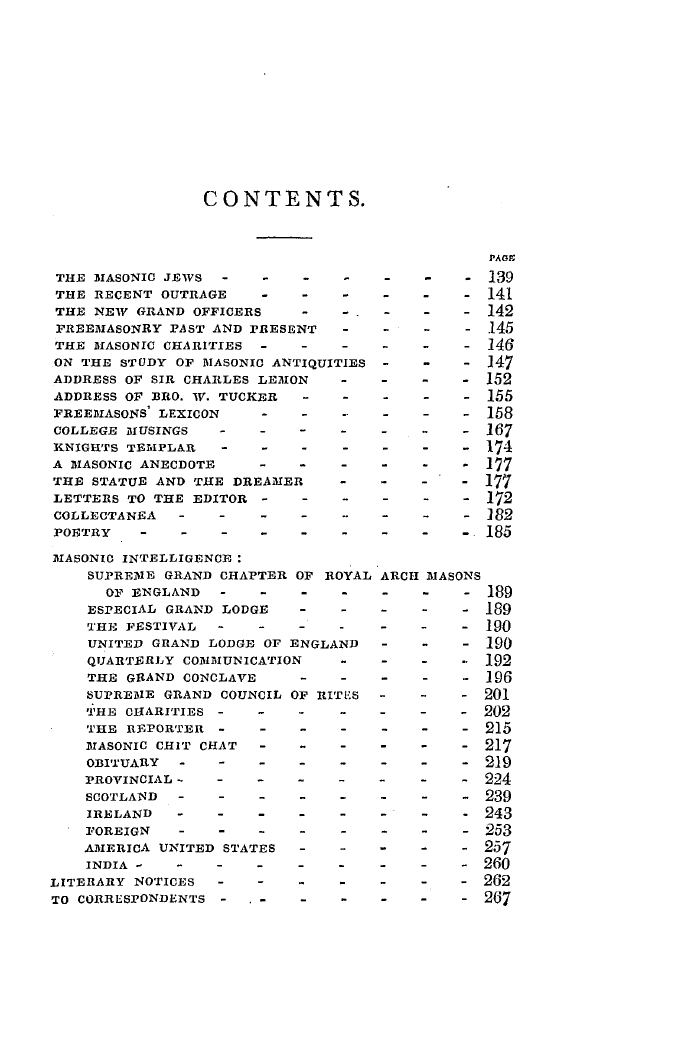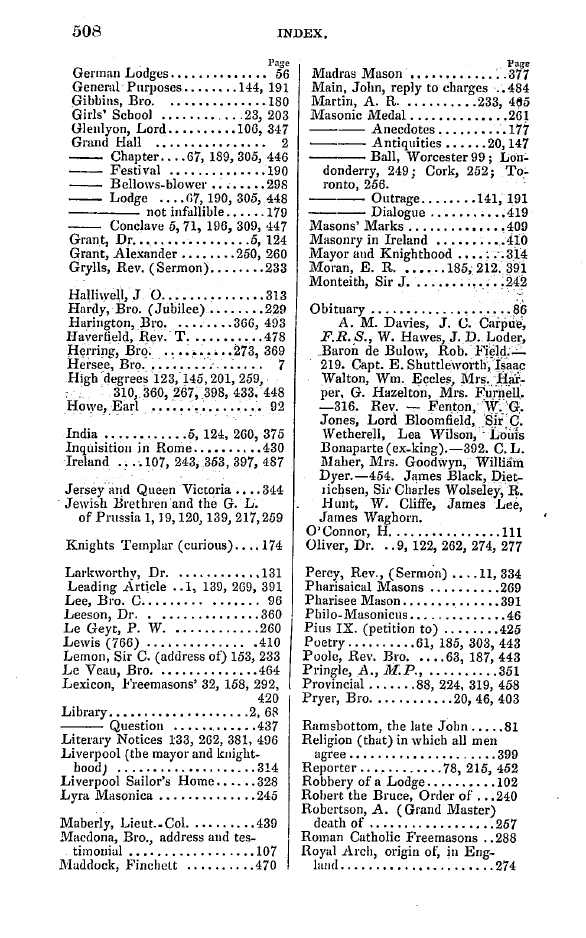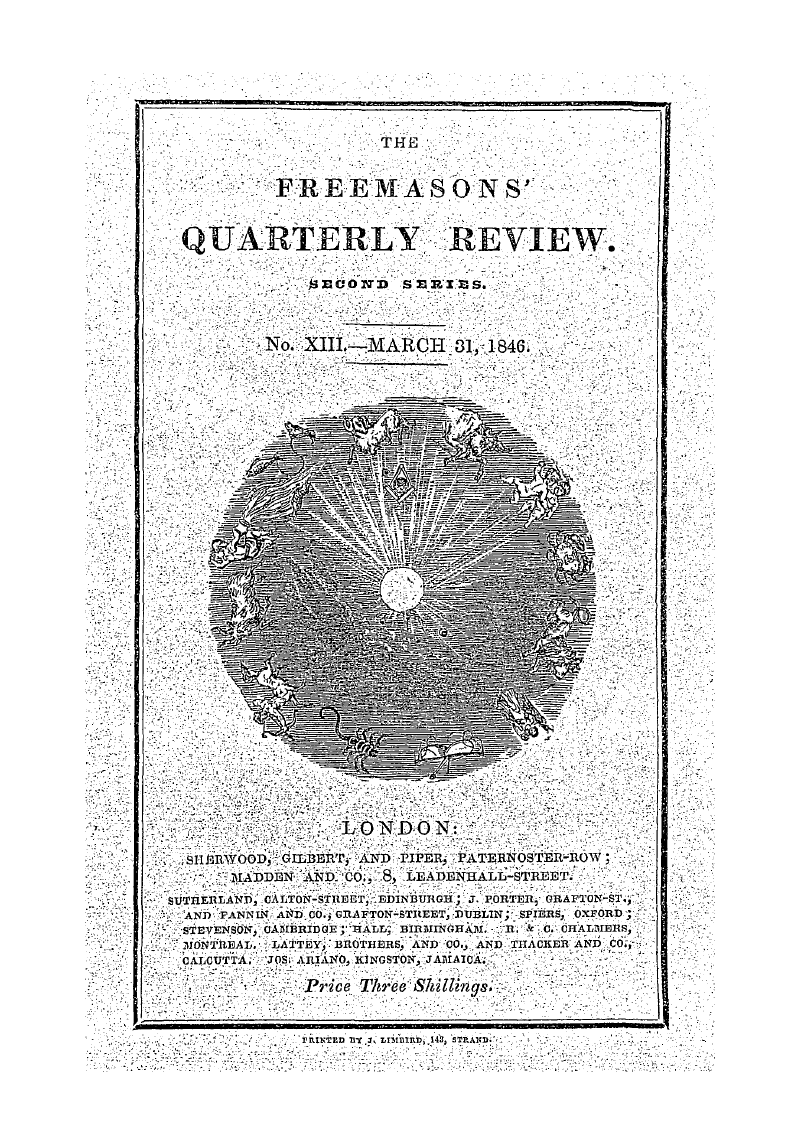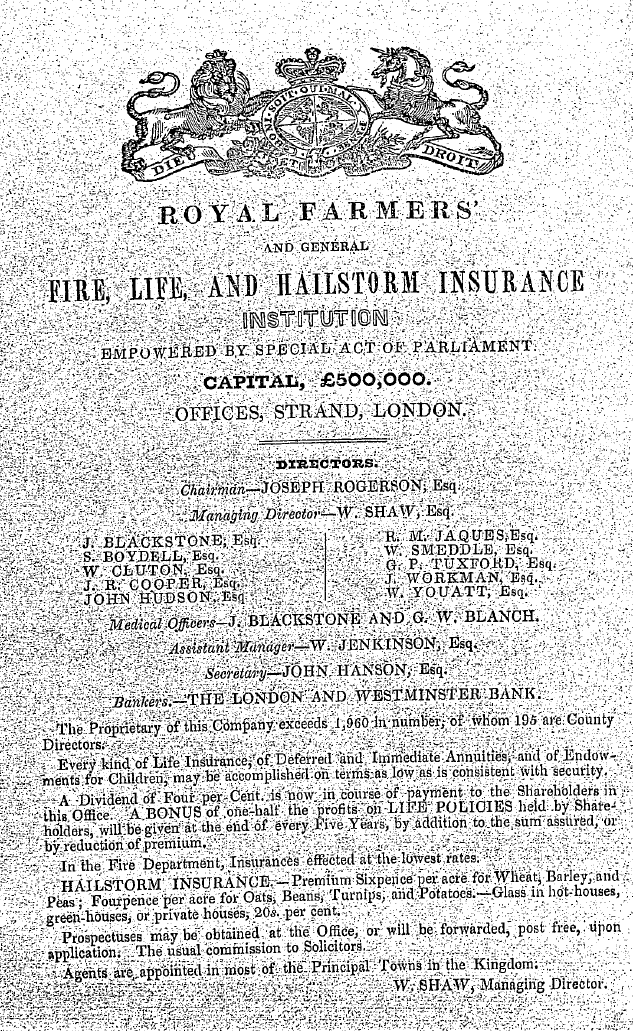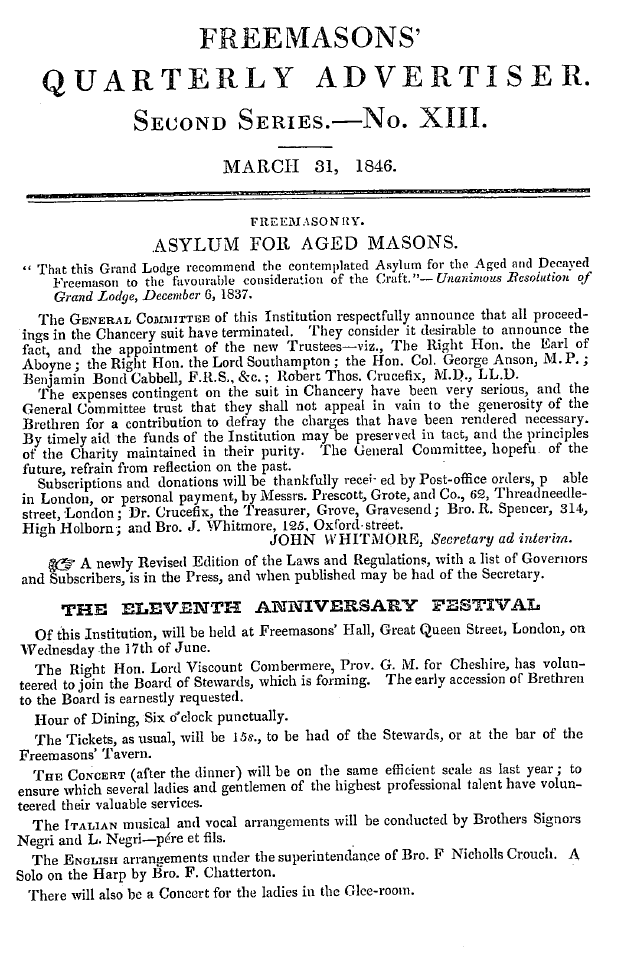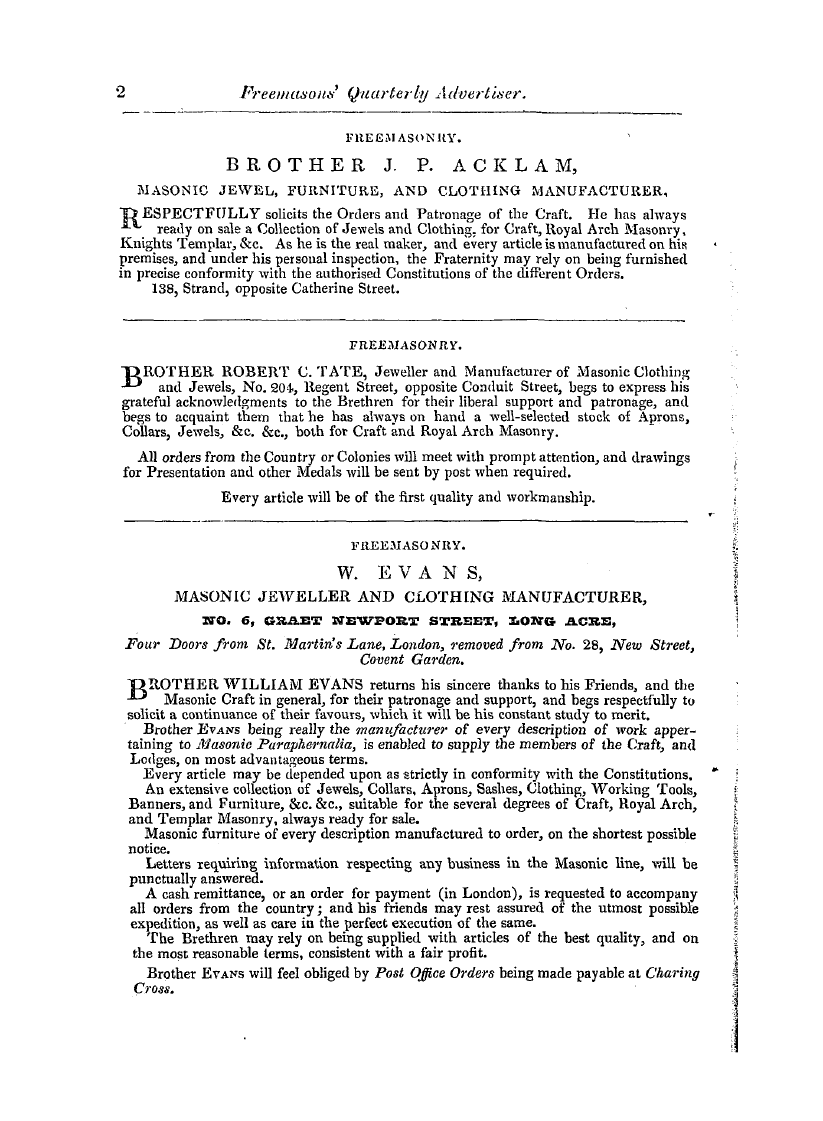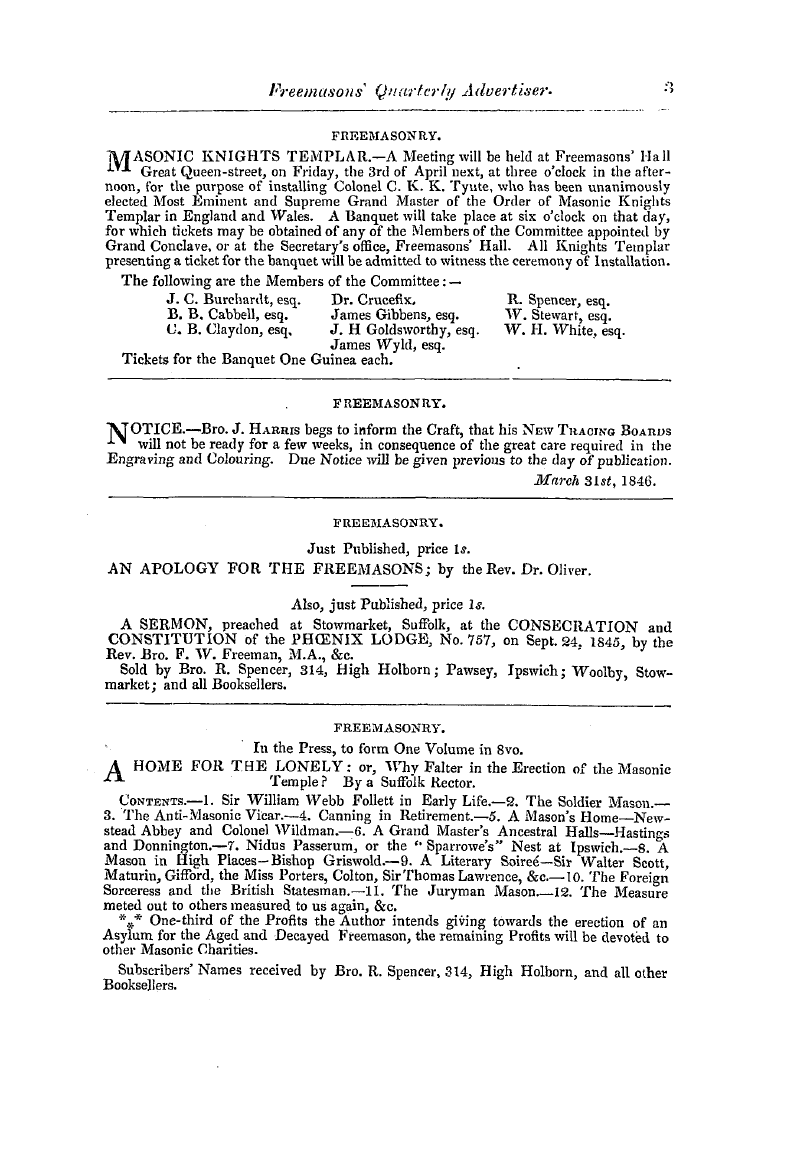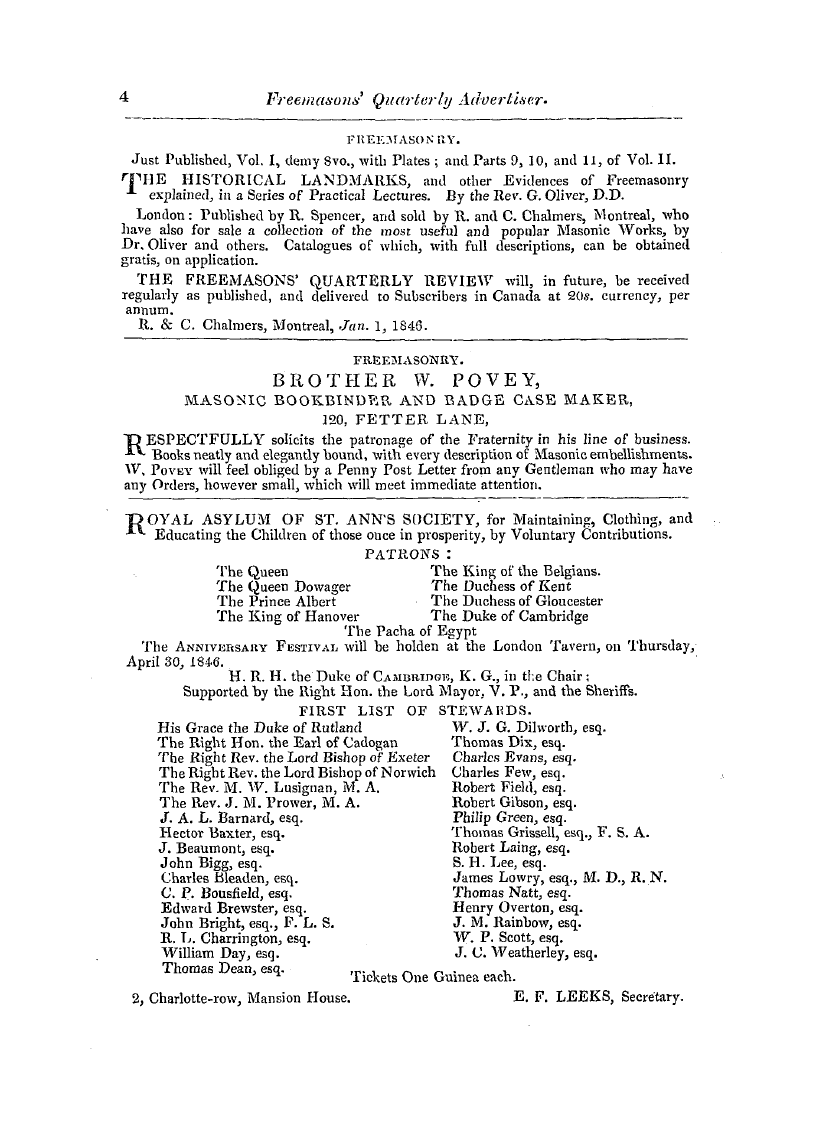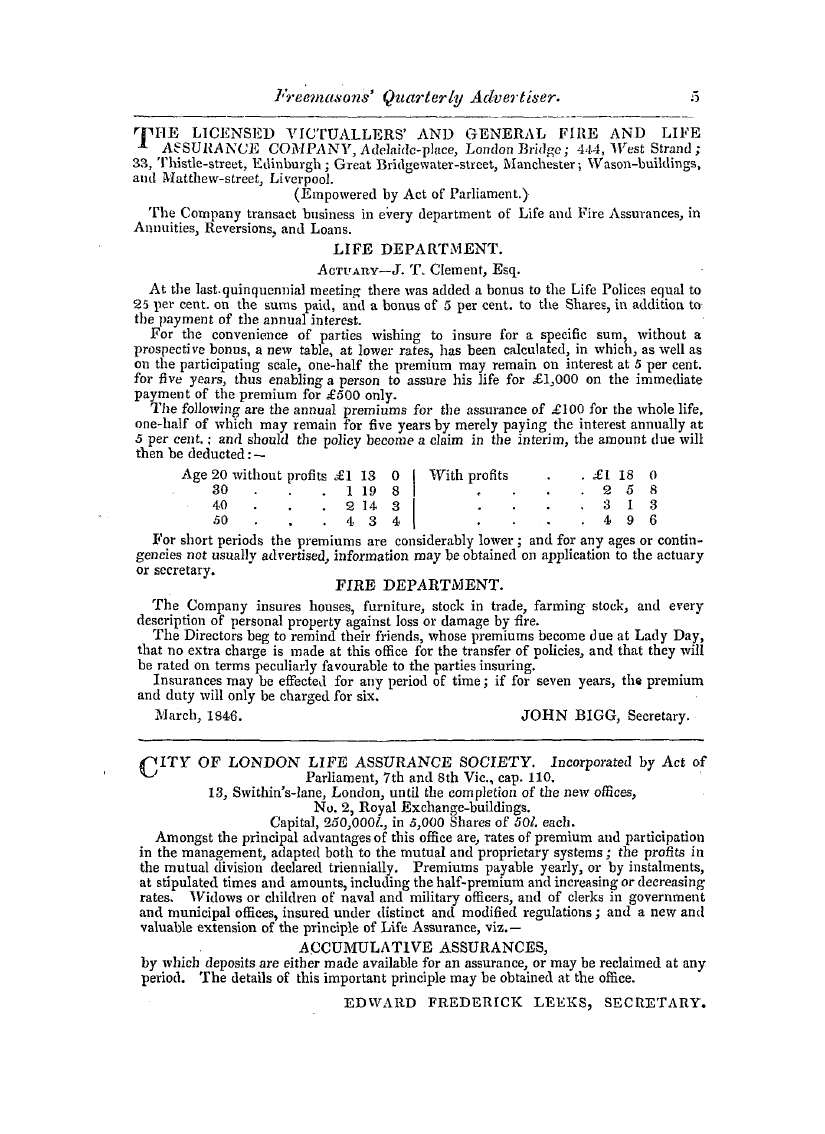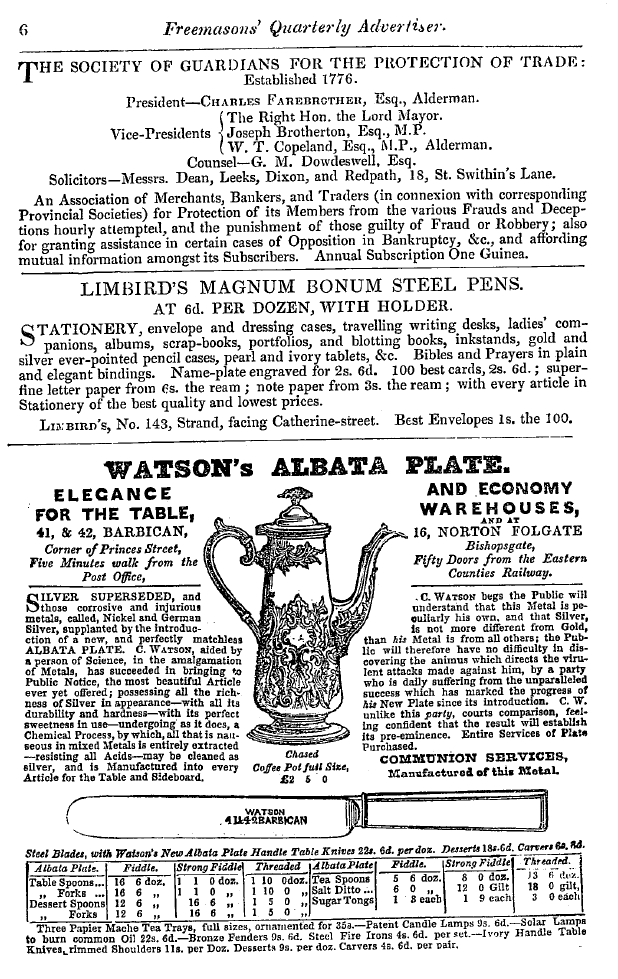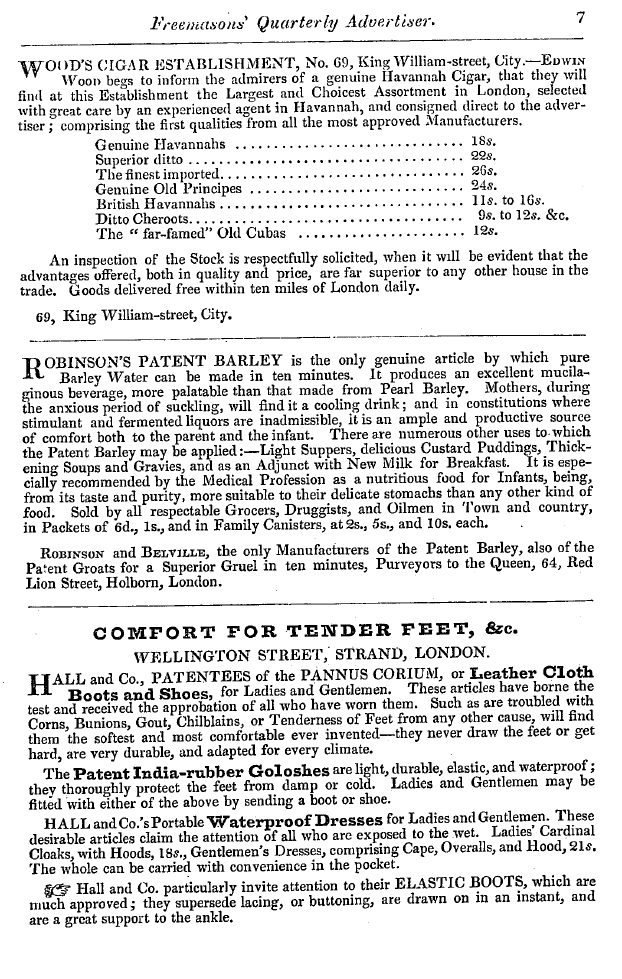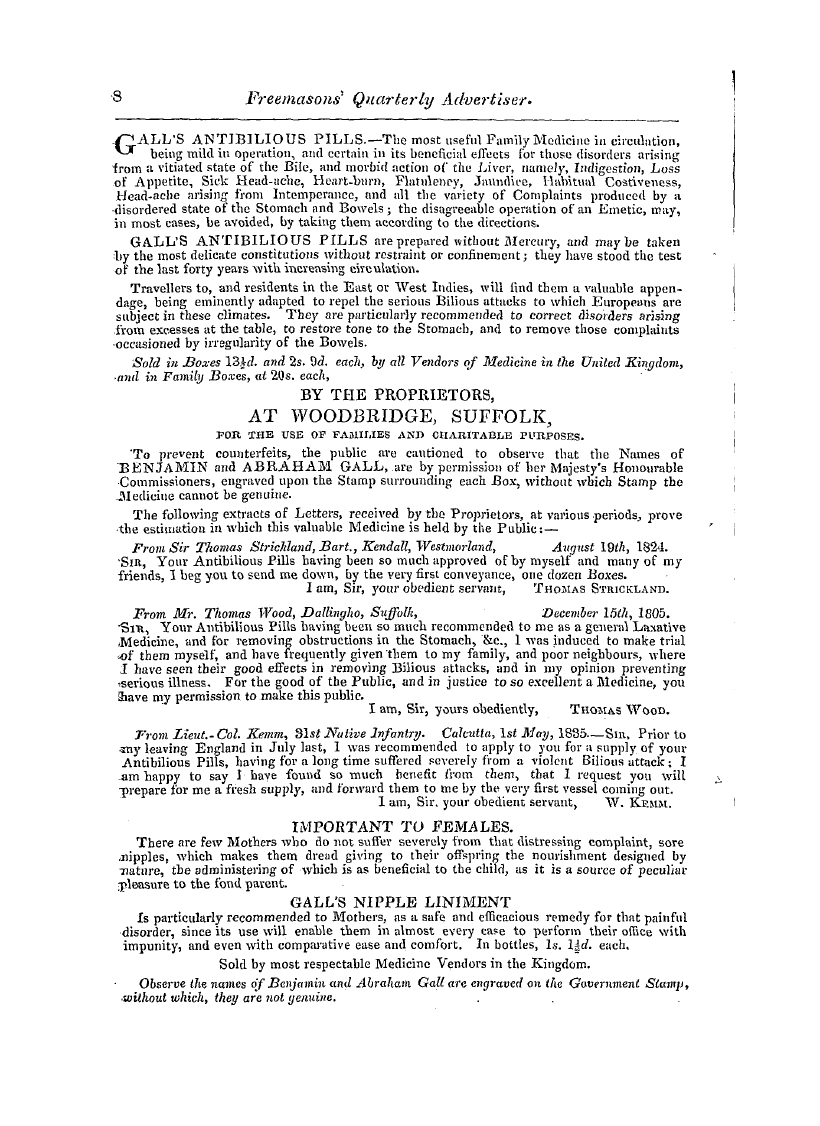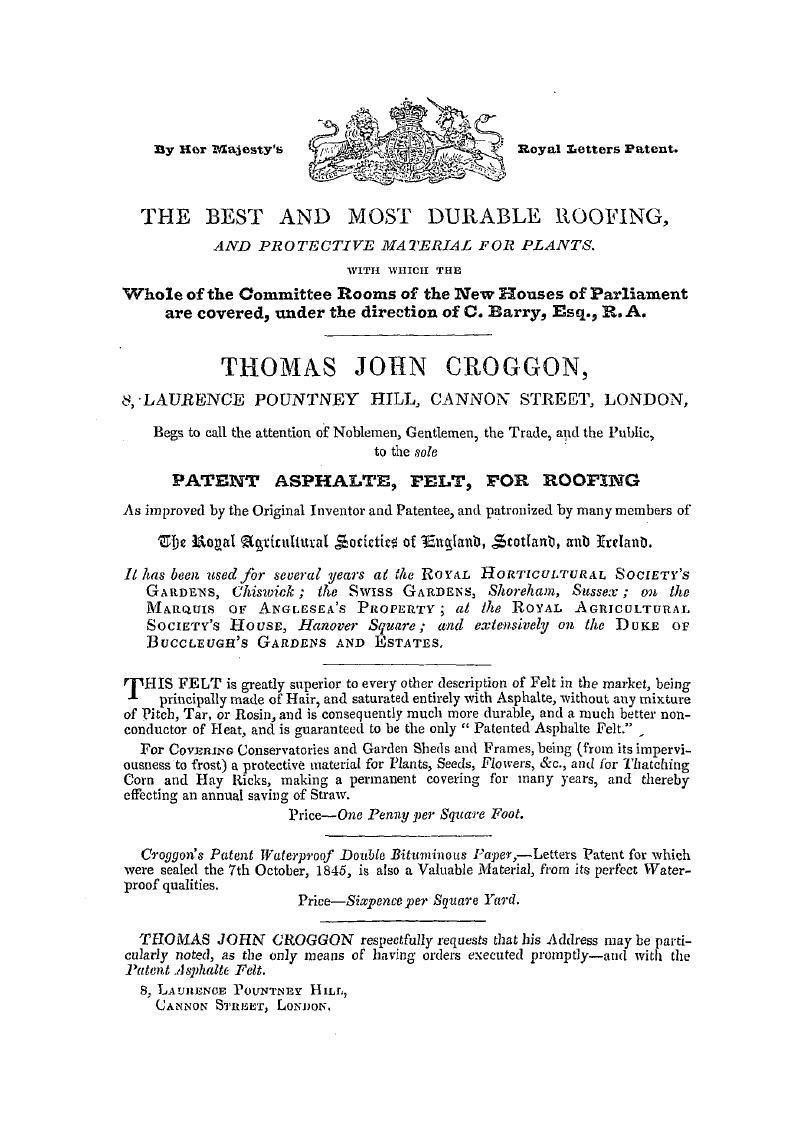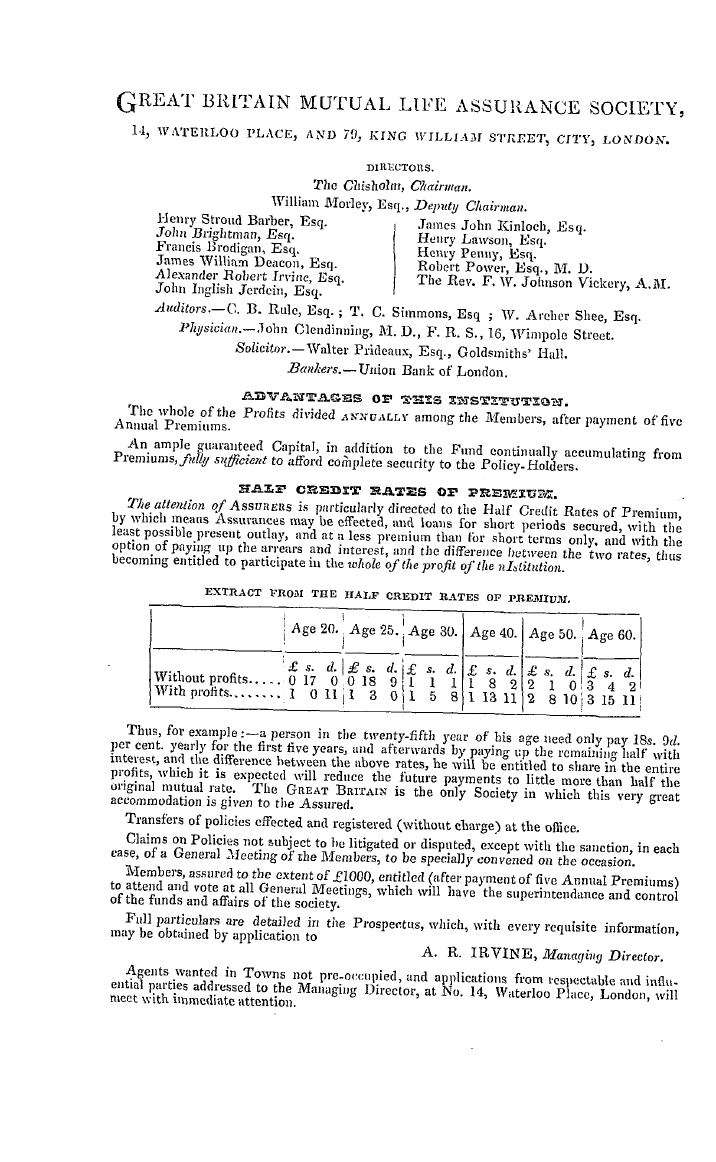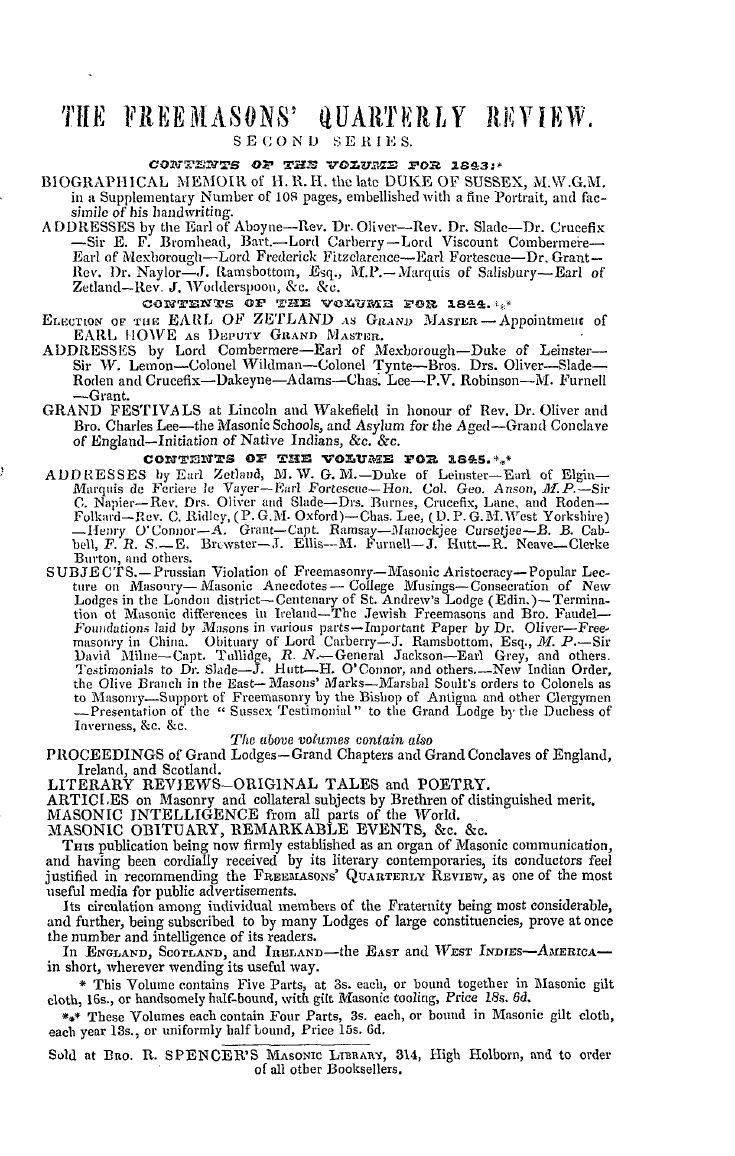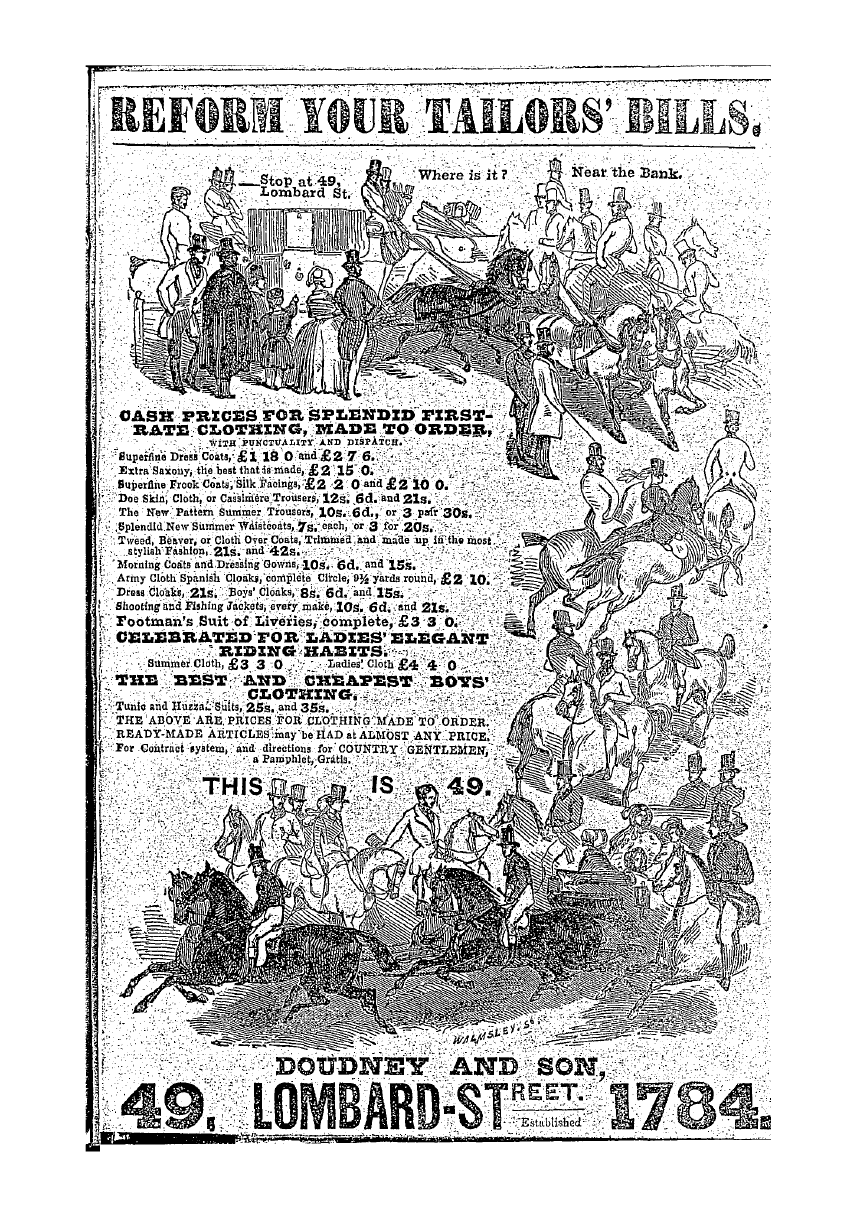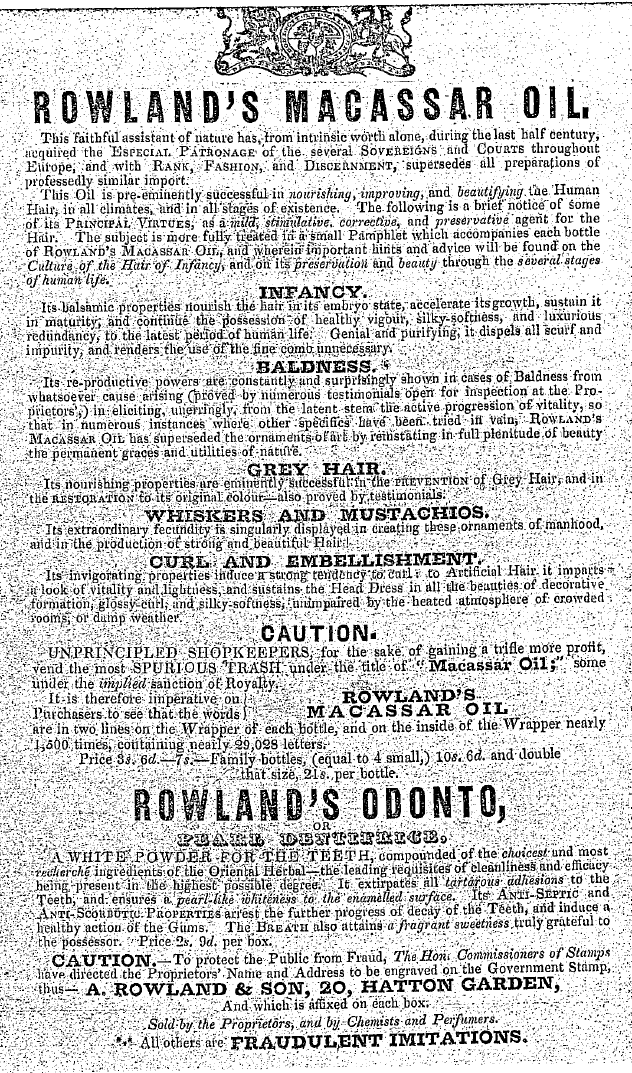Note: This text has been automatically extracted via Optical Character Recognition (OCR) software.
Brother Watson's Great Picture Of Burns,
BROTHER WATSON'S GREAT PICTURE OF BURNS ,
IN TUB CANONCAT -- KILWINNING LODGE . In our last number we alluded , by report , to the progress of this Historico-Masonic painting , - a personal inspection has since fully realised , and more than realised our most sanguine anticipations as to the result . We had , it must be owned , some doubts as to the capabilities of the subject in an artistic point of view ; more particularly had we apprehensions that the precise and orderly attitudes of a number of Masons in a formal
Lodge assembled , would prove any thing but objects favourable to that free and full development of figure , ancl of character , necessary to give variety and expression to the scene . We were , therefore , most agreeably disappointed in finding all our pre-conceptions entirely at fault , on beholding the varied and picturesque groups , and individuals starting forth from the canvass in all the " regular irregularity " of constellations and their several stars . Nor is the composer unauthorised in this avoidance
of the more strict observance of Masonic formality ; for oft have we beheld within the hall of St . John ' s Chapel , on occasions of far less interest and importance , the precise arrangements suddenly broken up , ancl the eager Brethren in various attitudes and motions pressing with anxious regard towards the dais to witness the induction of some esteemed or distinguished individual . The assemblage of the Brotherhood exhibited in the picture would
appear to have been under some such influence as this , from the varied and irregular groups into which they are for the moment thrown—the point of time chosen being that in which the poet is appointed laureate . Some are seated , others arestanding , or peeping forward , all , however , under
the evident influence of the great object of attraction , —Caledonia ' s Bard , — who is here represented in an erect attitude , the shoulders slightly inclined , with one foot raised on the steps leading to the dais , and immediately below the Master ' s chair . The figure is firmly and manfully set , expressive of perfect self-possession—the right hand is placed significantly yet naturally on his breast , while his large and lustrous eyes are glancing towards the Master ' s hand , which is stretched forth to bind the poet ' s brow . It is not easy to conceive how his person could have been depicted in a
position more imposing or more dignified . Indeed , no other could have been so appropriate , natural , and characteristic , as the nicely balanced posture in which " the inspired ploughman" is placed . The countenance of the poet is a master-piece of the painter . His eyes appear glowing with confessed delight as he stands to receive the Masonic coronal—a tribute paid to his poetic fame , and not the less prized by him on account of the quarter whence it emanated—his " Dear Brethren of the Mystic tie . " The Master of the Lodge , at the period of this event , was Alexander Fergusson , Esq ., of CraisdaiToch . one of the heroes in
Burns' song of " the Whistle of Worth , " and father of the late R . Cutlar Fergusson , M . P . All the other " dramatis personte " represented were men and Brethren more or less connected with the Bard as his correspondents , convives , or patrons ; such as Dunbar , Ainslie , Dr . Wood , Professor Stewart , Sir W . Forbes , Henry Erskine , Lord Monboddo , — in all , sixty portraits . The whole form a study worthy alike of the connoisseur ancl the Brother Mason . Some biographical account of the
characters , we understand , is in progress to illustrate the picture , which we trust will ere long be exhibited to the public at large . 11 would make a fine subject for an engraving . Subscribers would not be wanting either iu Edinburgh or London . VOL . IV . n
Note: This text has been automatically extracted via Optical Character Recognition (OCR) software.
Brother Watson's Great Picture Of Burns,
BROTHER WATSON'S GREAT PICTURE OF BURNS ,
IN TUB CANONCAT -- KILWINNING LODGE . In our last number we alluded , by report , to the progress of this Historico-Masonic painting , - a personal inspection has since fully realised , and more than realised our most sanguine anticipations as to the result . We had , it must be owned , some doubts as to the capabilities of the subject in an artistic point of view ; more particularly had we apprehensions that the precise and orderly attitudes of a number of Masons in a formal
Lodge assembled , would prove any thing but objects favourable to that free and full development of figure , ancl of character , necessary to give variety and expression to the scene . We were , therefore , most agreeably disappointed in finding all our pre-conceptions entirely at fault , on beholding the varied and picturesque groups , and individuals starting forth from the canvass in all the " regular irregularity " of constellations and their several stars . Nor is the composer unauthorised in this avoidance
of the more strict observance of Masonic formality ; for oft have we beheld within the hall of St . John ' s Chapel , on occasions of far less interest and importance , the precise arrangements suddenly broken up , ancl the eager Brethren in various attitudes and motions pressing with anxious regard towards the dais to witness the induction of some esteemed or distinguished individual . The assemblage of the Brotherhood exhibited in the picture would
appear to have been under some such influence as this , from the varied and irregular groups into which they are for the moment thrown—the point of time chosen being that in which the poet is appointed laureate . Some are seated , others arestanding , or peeping forward , all , however , under
the evident influence of the great object of attraction , —Caledonia ' s Bard , — who is here represented in an erect attitude , the shoulders slightly inclined , with one foot raised on the steps leading to the dais , and immediately below the Master ' s chair . The figure is firmly and manfully set , expressive of perfect self-possession—the right hand is placed significantly yet naturally on his breast , while his large and lustrous eyes are glancing towards the Master ' s hand , which is stretched forth to bind the poet ' s brow . It is not easy to conceive how his person could have been depicted in a
position more imposing or more dignified . Indeed , no other could have been so appropriate , natural , and characteristic , as the nicely balanced posture in which " the inspired ploughman" is placed . The countenance of the poet is a master-piece of the painter . His eyes appear glowing with confessed delight as he stands to receive the Masonic coronal—a tribute paid to his poetic fame , and not the less prized by him on account of the quarter whence it emanated—his " Dear Brethren of the Mystic tie . " The Master of the Lodge , at the period of this event , was Alexander Fergusson , Esq ., of CraisdaiToch . one of the heroes in
Burns' song of " the Whistle of Worth , " and father of the late R . Cutlar Fergusson , M . P . All the other " dramatis personte " represented were men and Brethren more or less connected with the Bard as his correspondents , convives , or patrons ; such as Dunbar , Ainslie , Dr . Wood , Professor Stewart , Sir W . Forbes , Henry Erskine , Lord Monboddo , — in all , sixty portraits . The whole form a study worthy alike of the connoisseur ancl the Brother Mason . Some biographical account of the
characters , we understand , is in progress to illustrate the picture , which we trust will ere long be exhibited to the public at large . 11 would make a fine subject for an engraving . Subscribers would not be wanting either iu Edinburgh or London . VOL . IV . n
































































